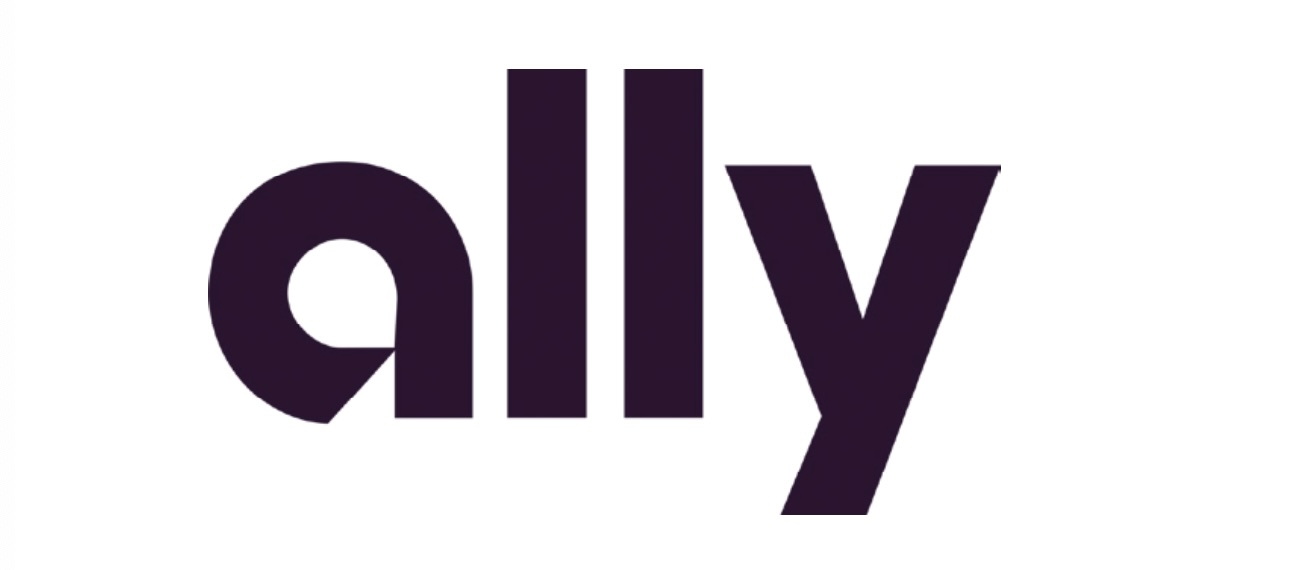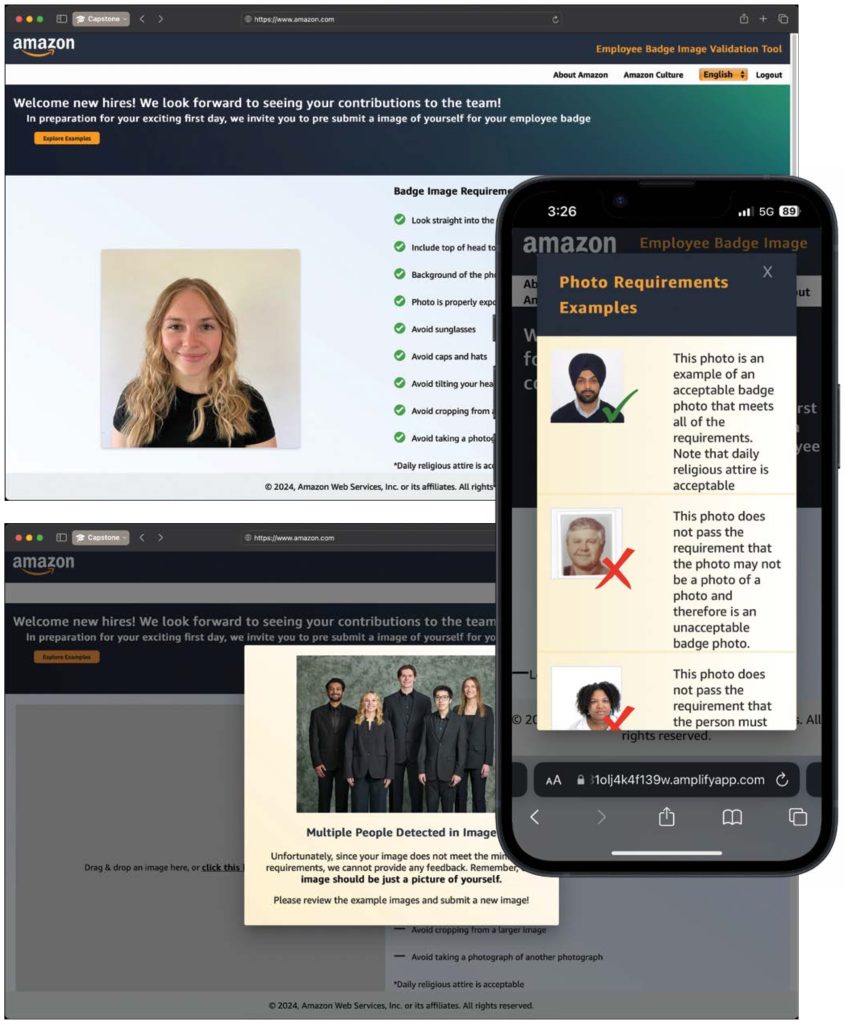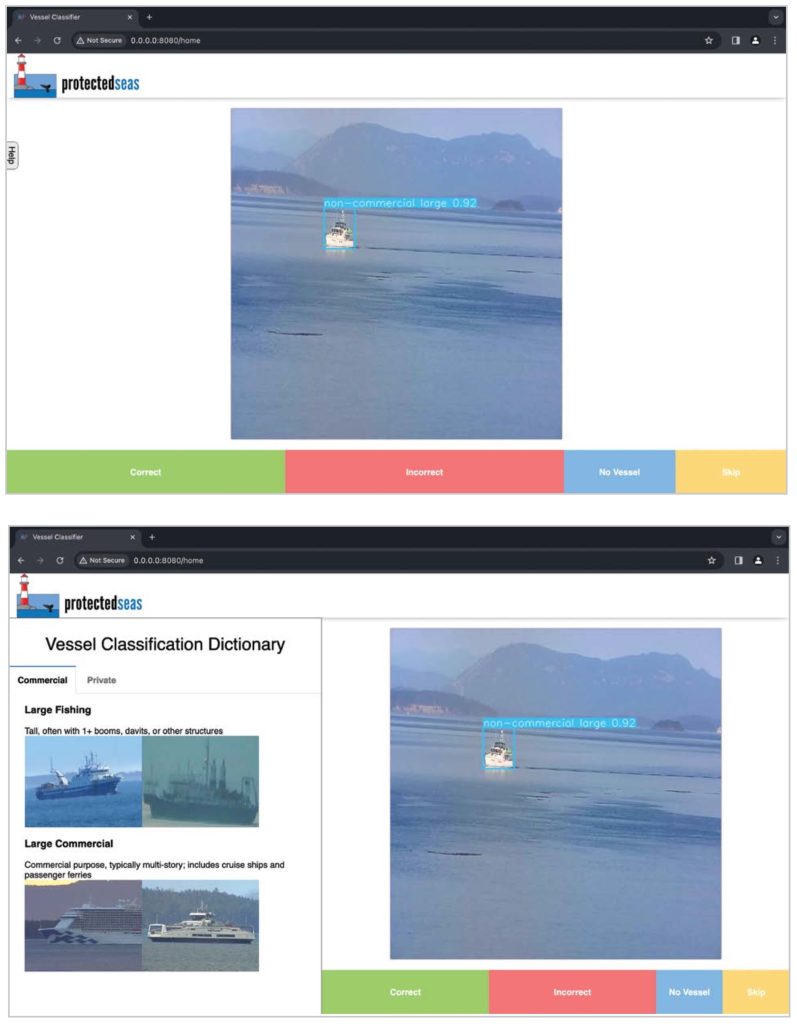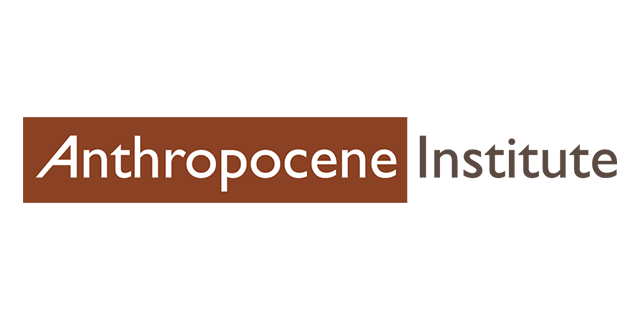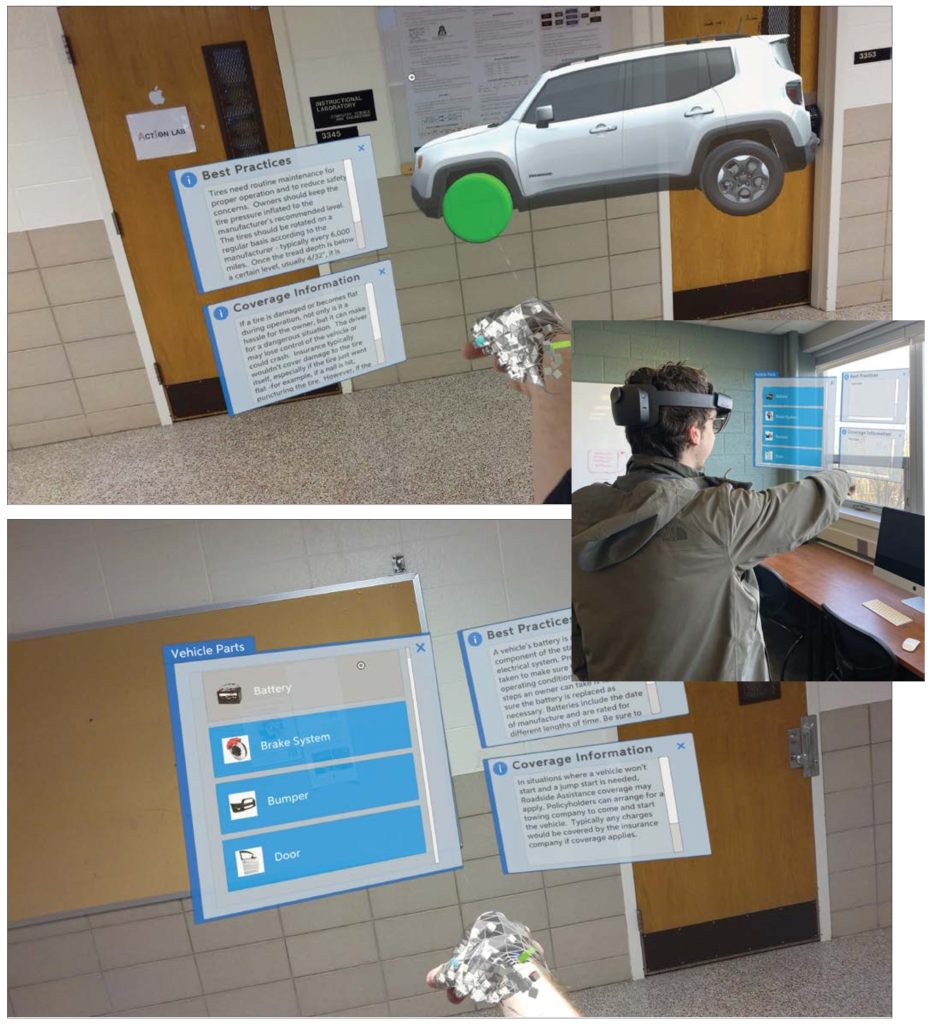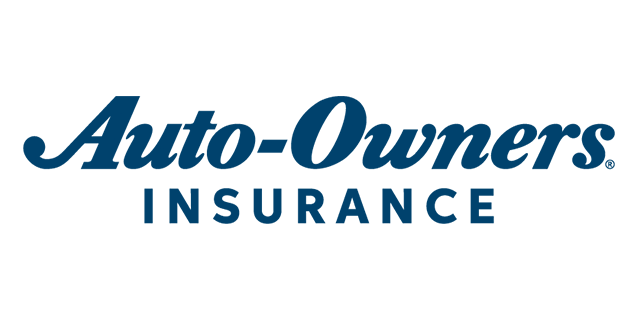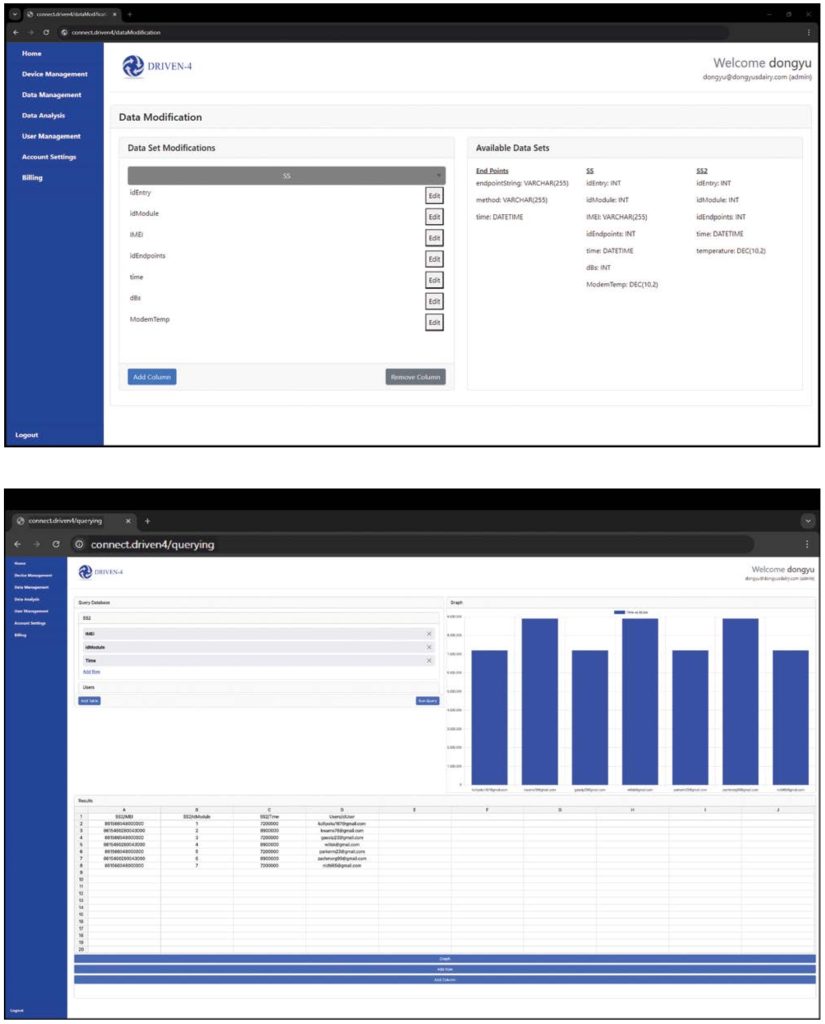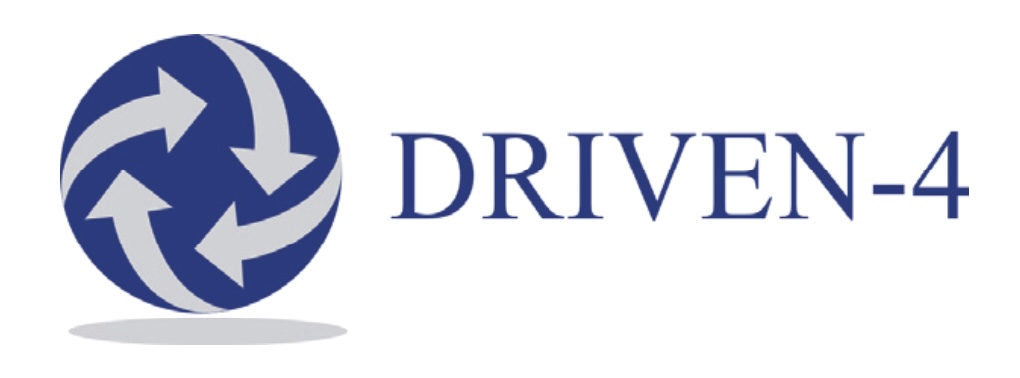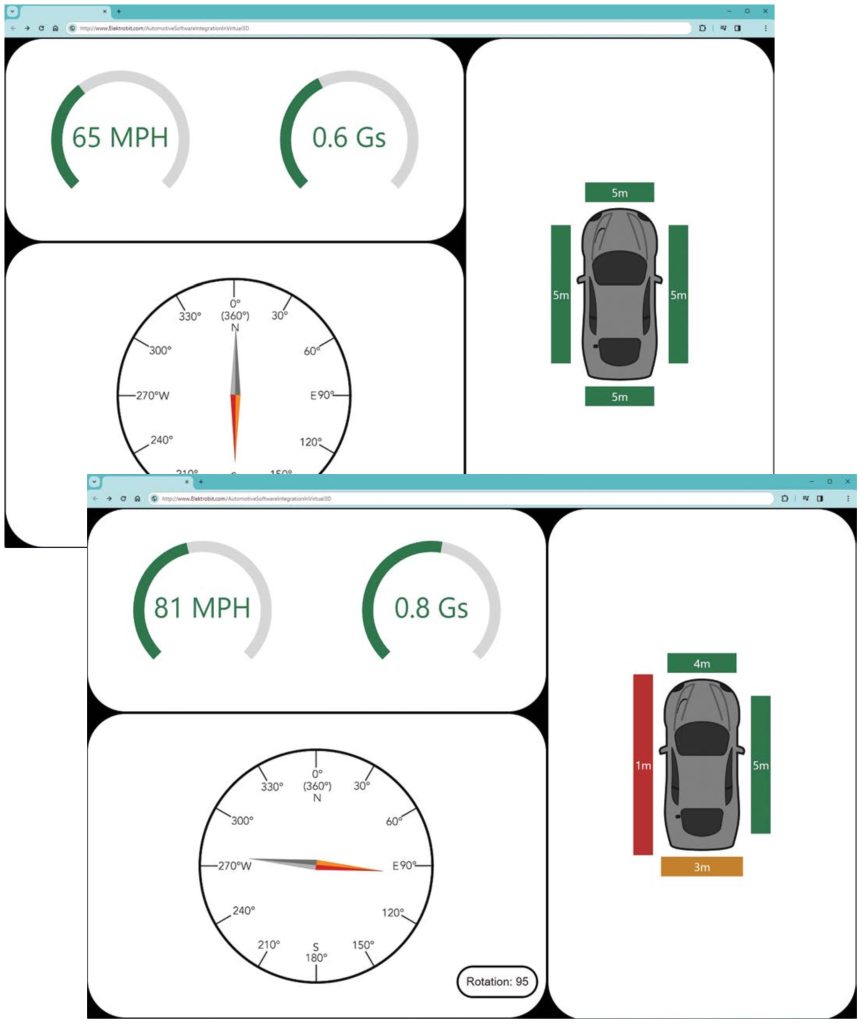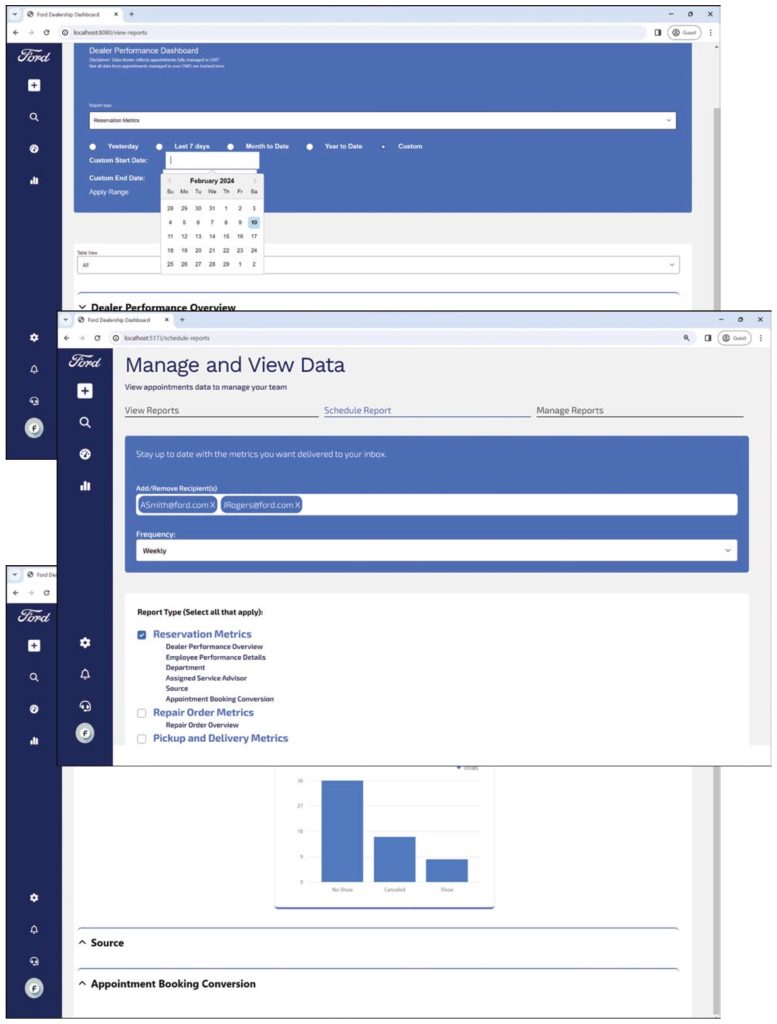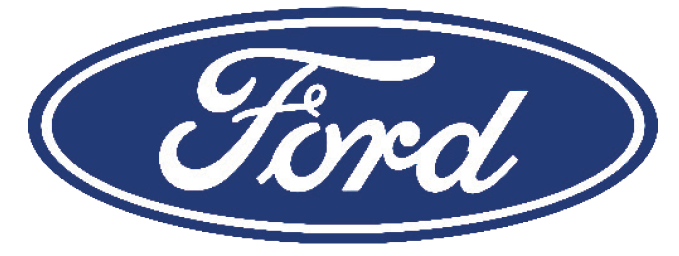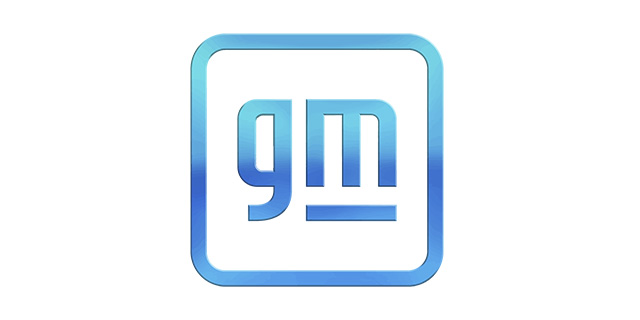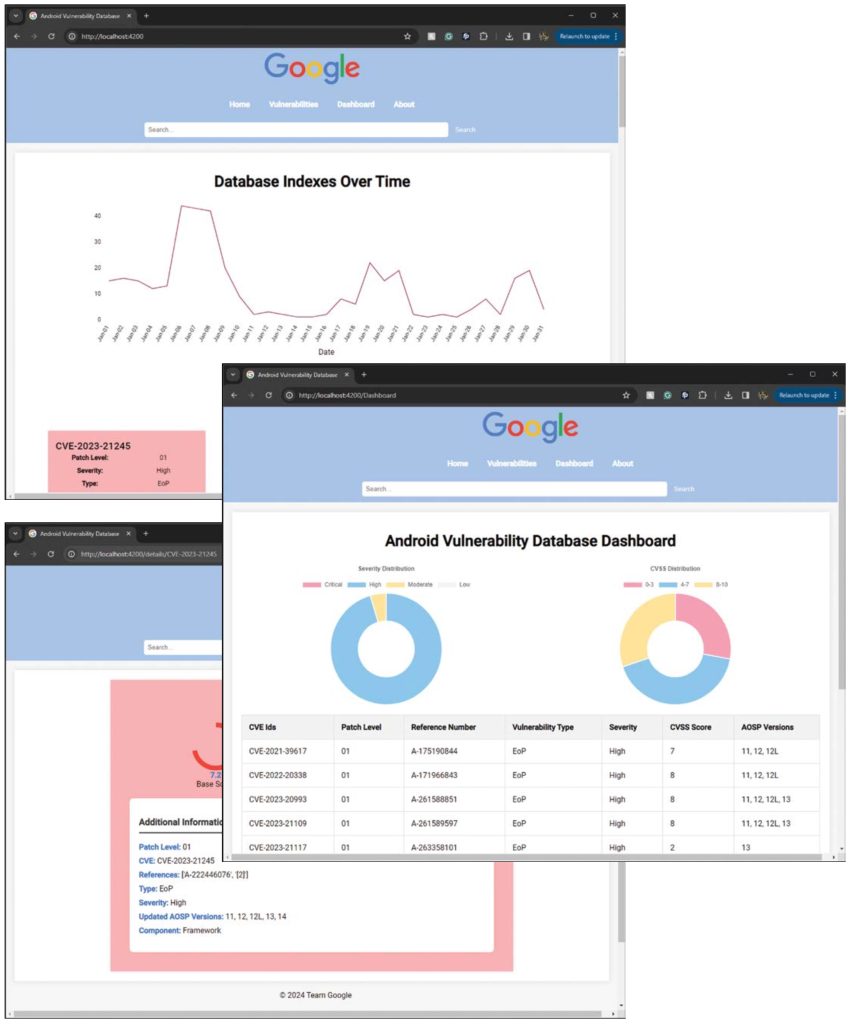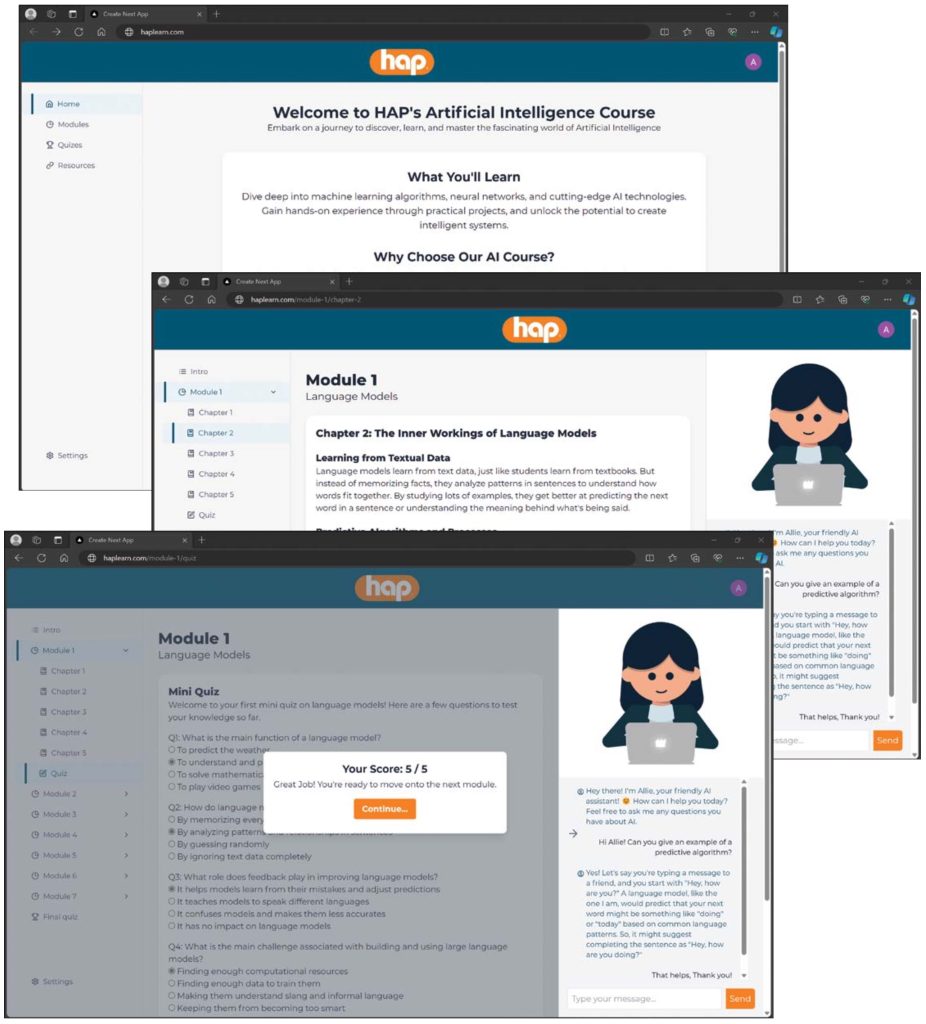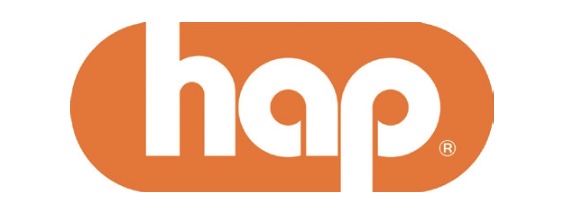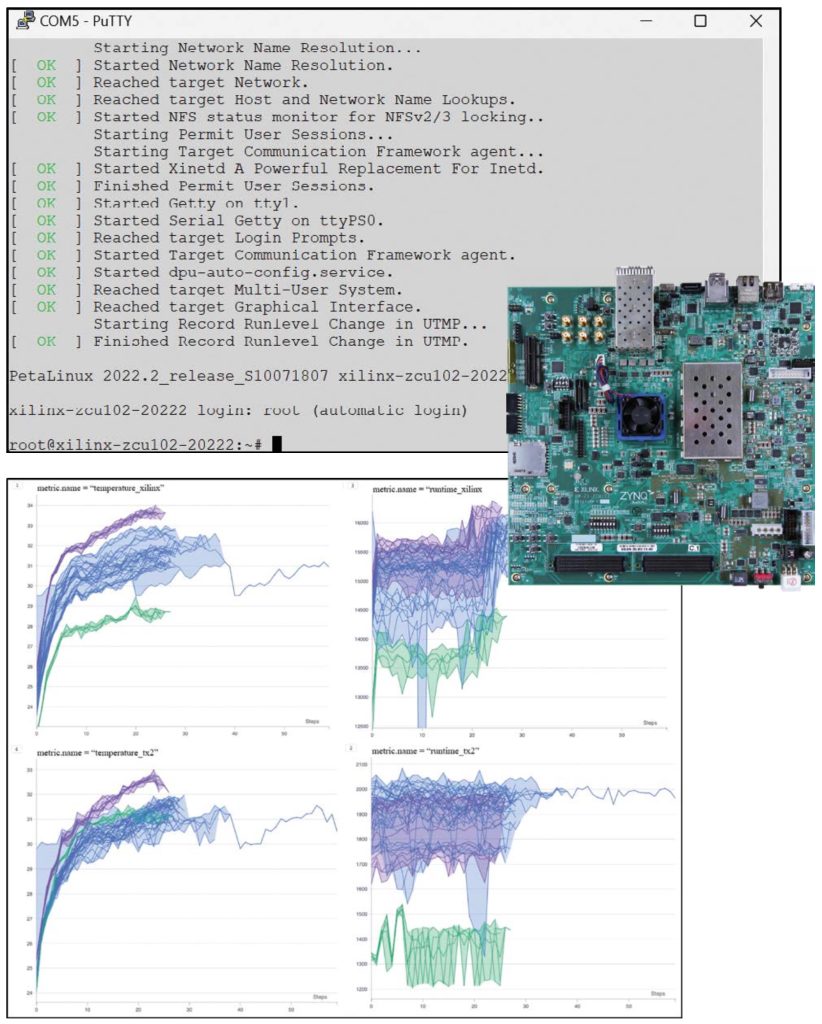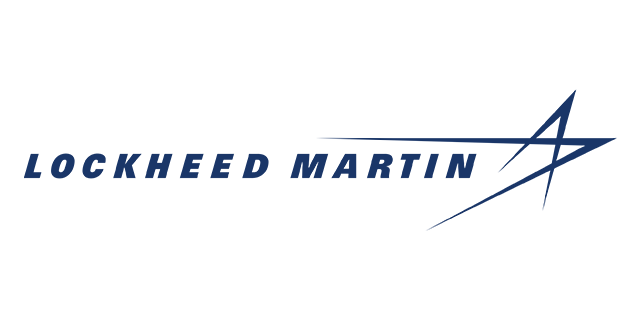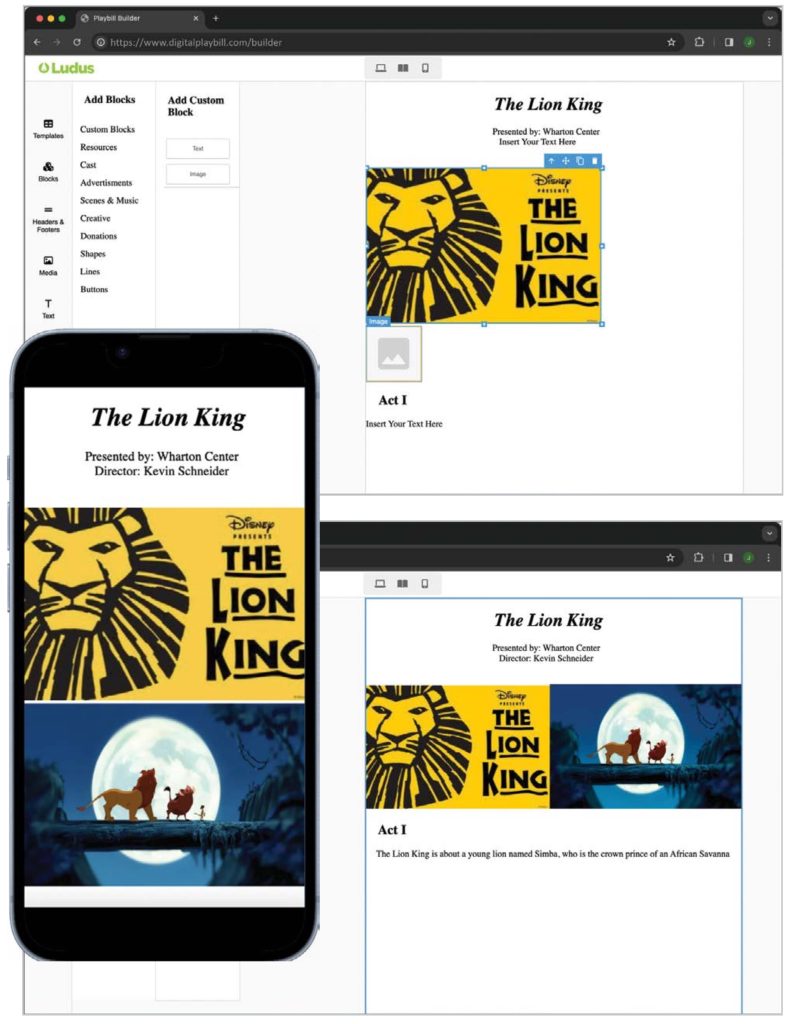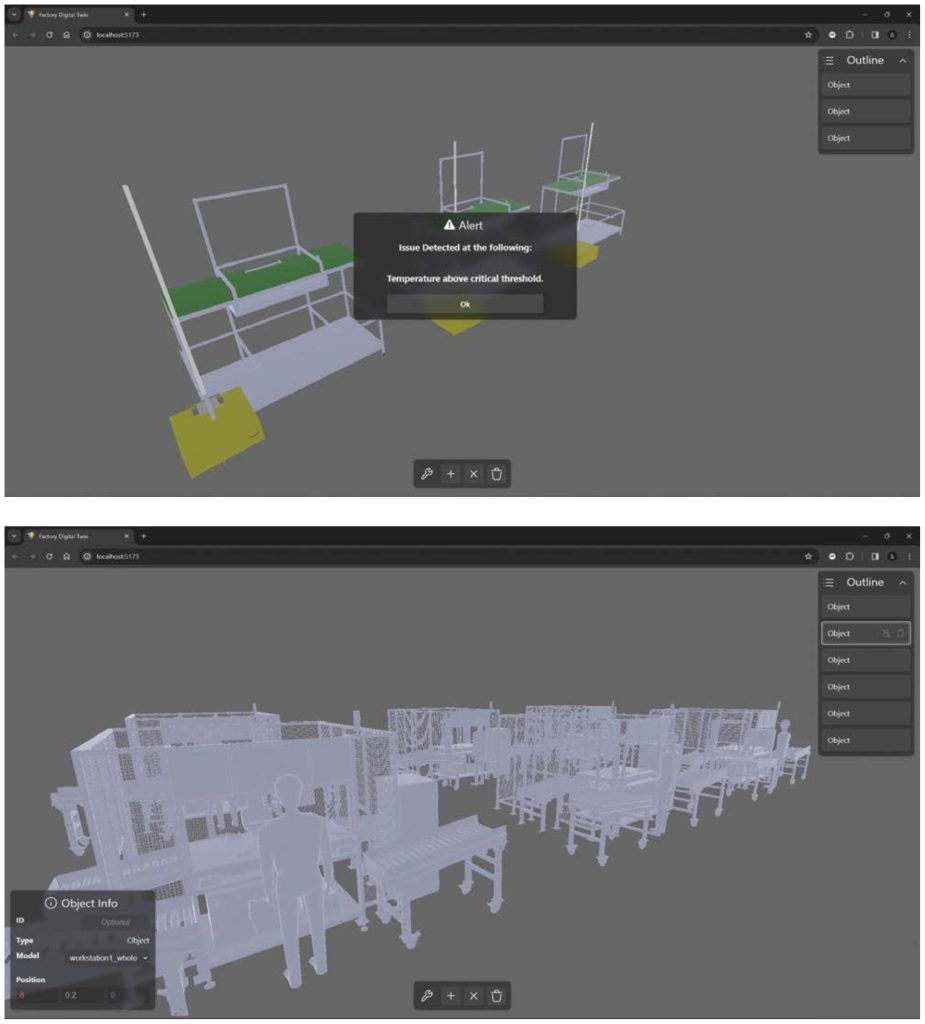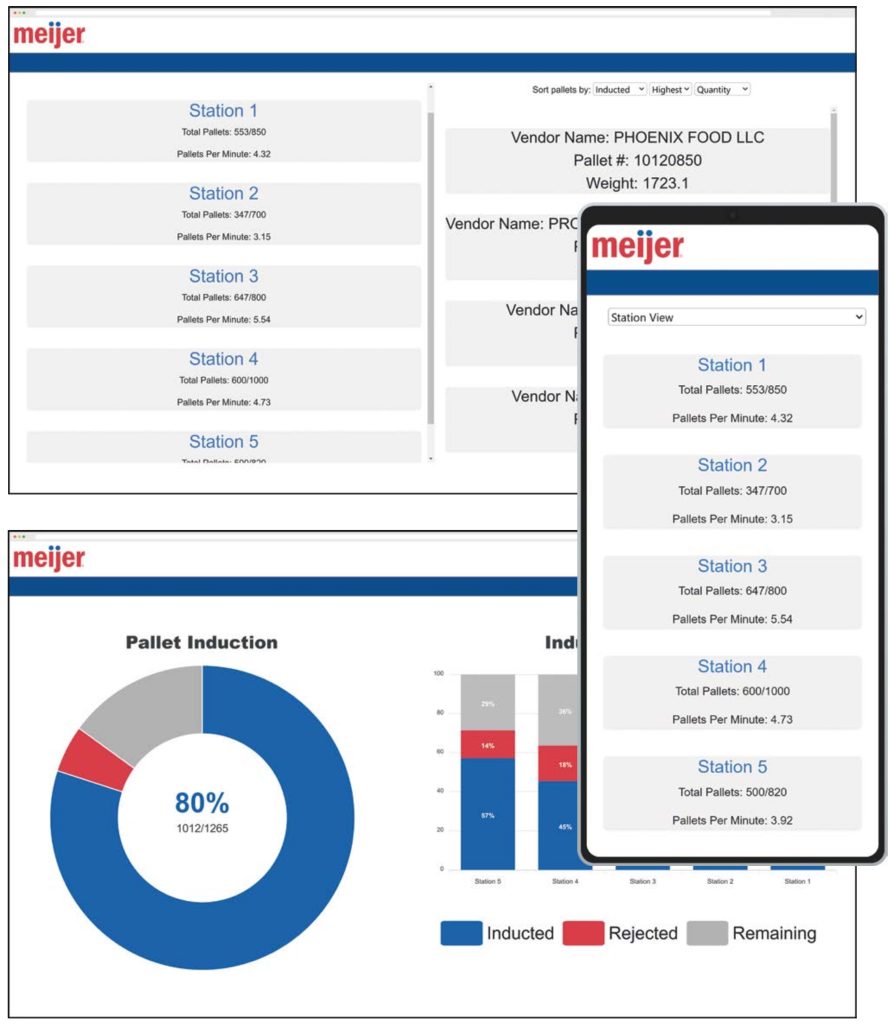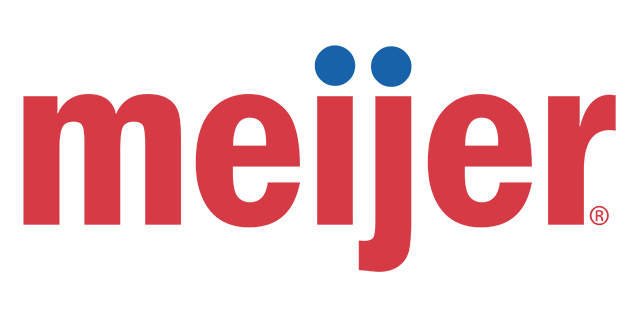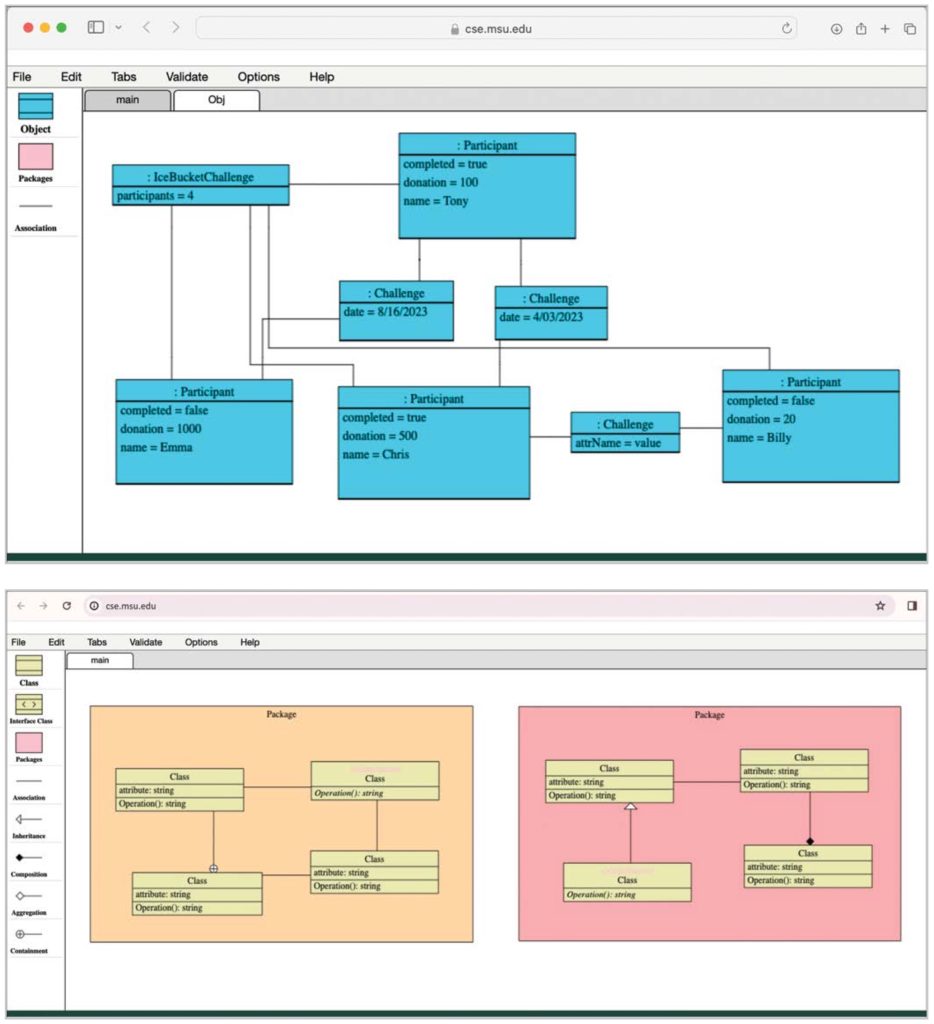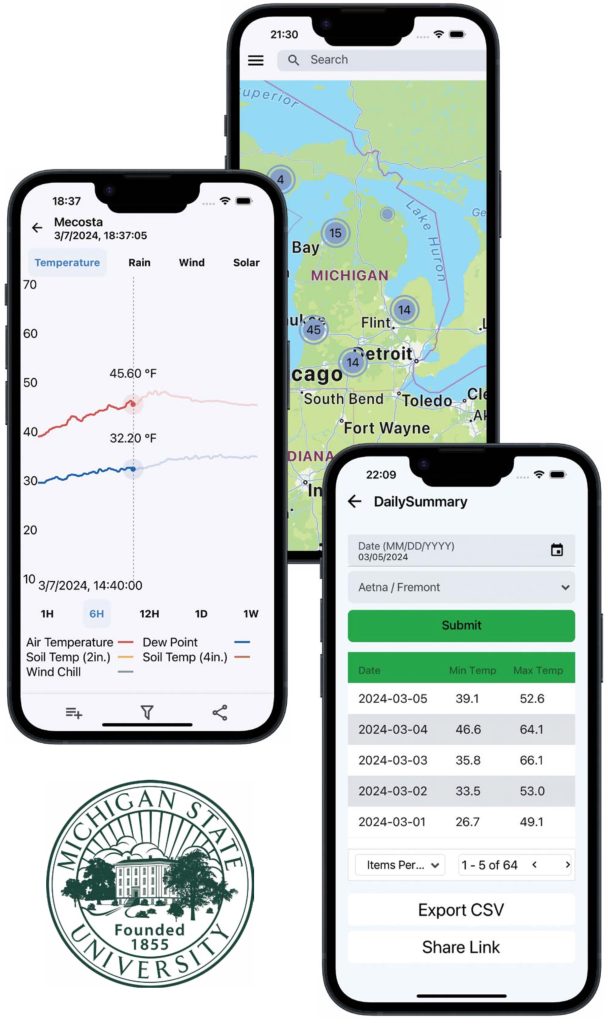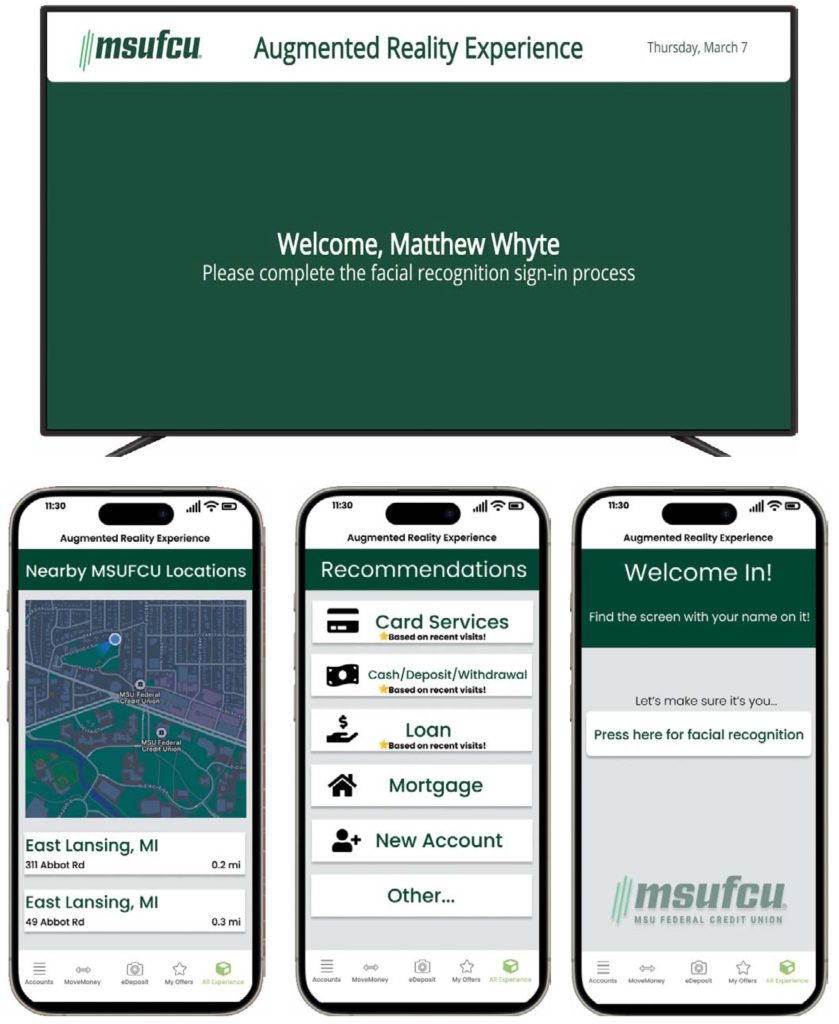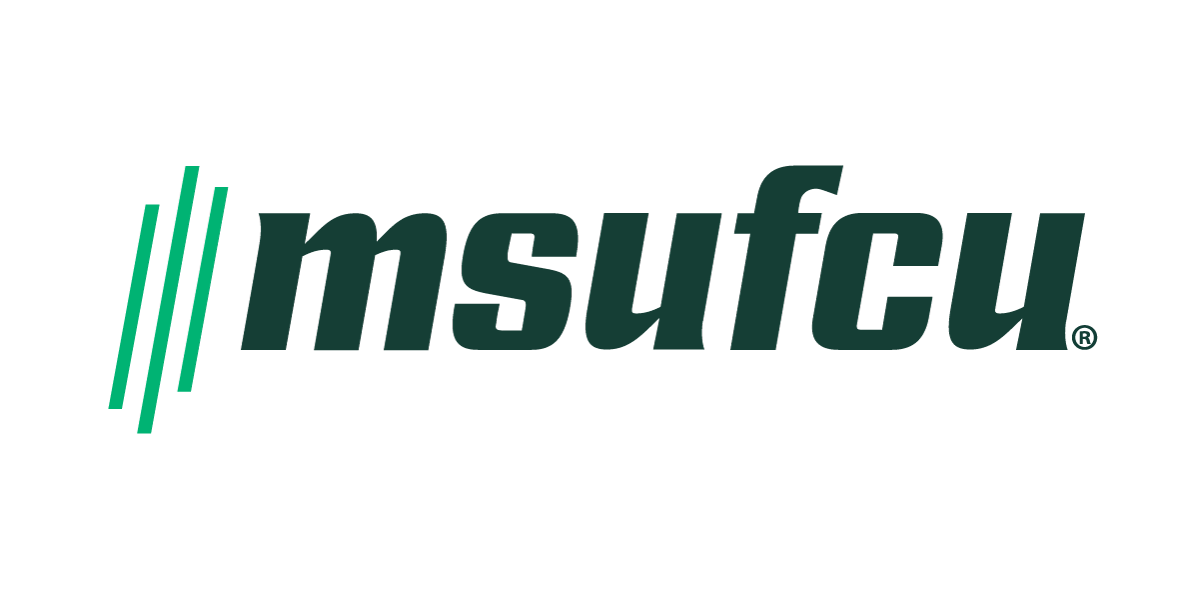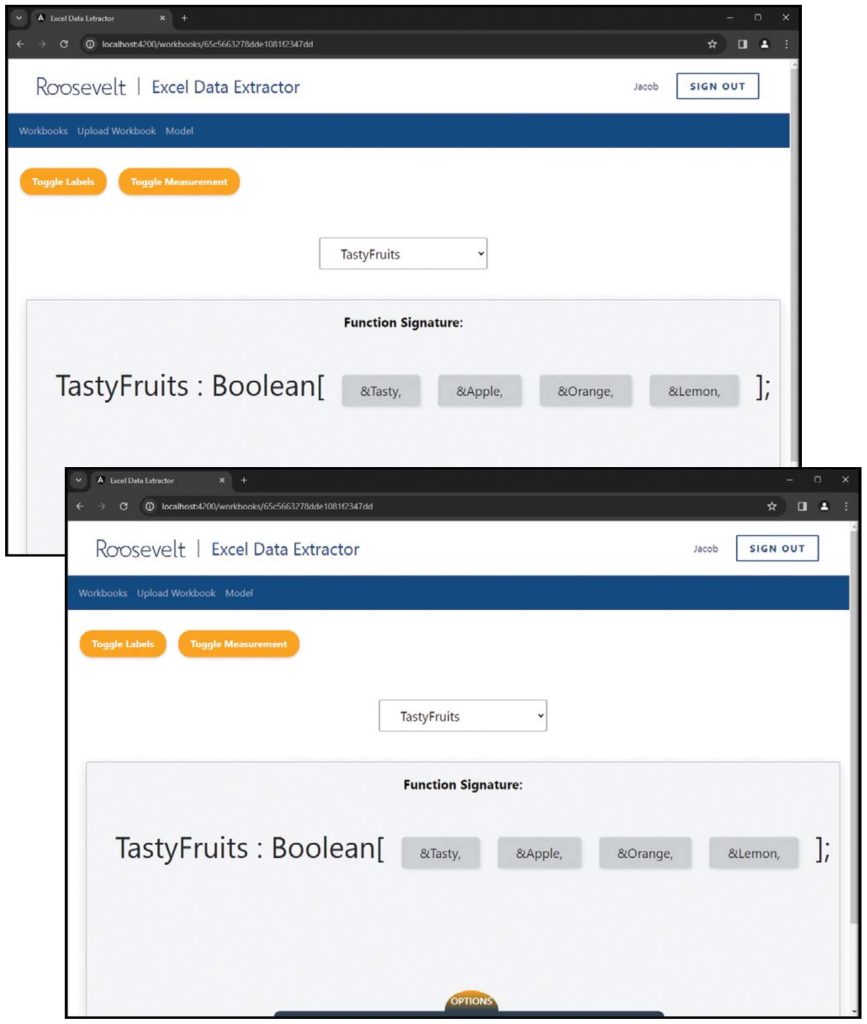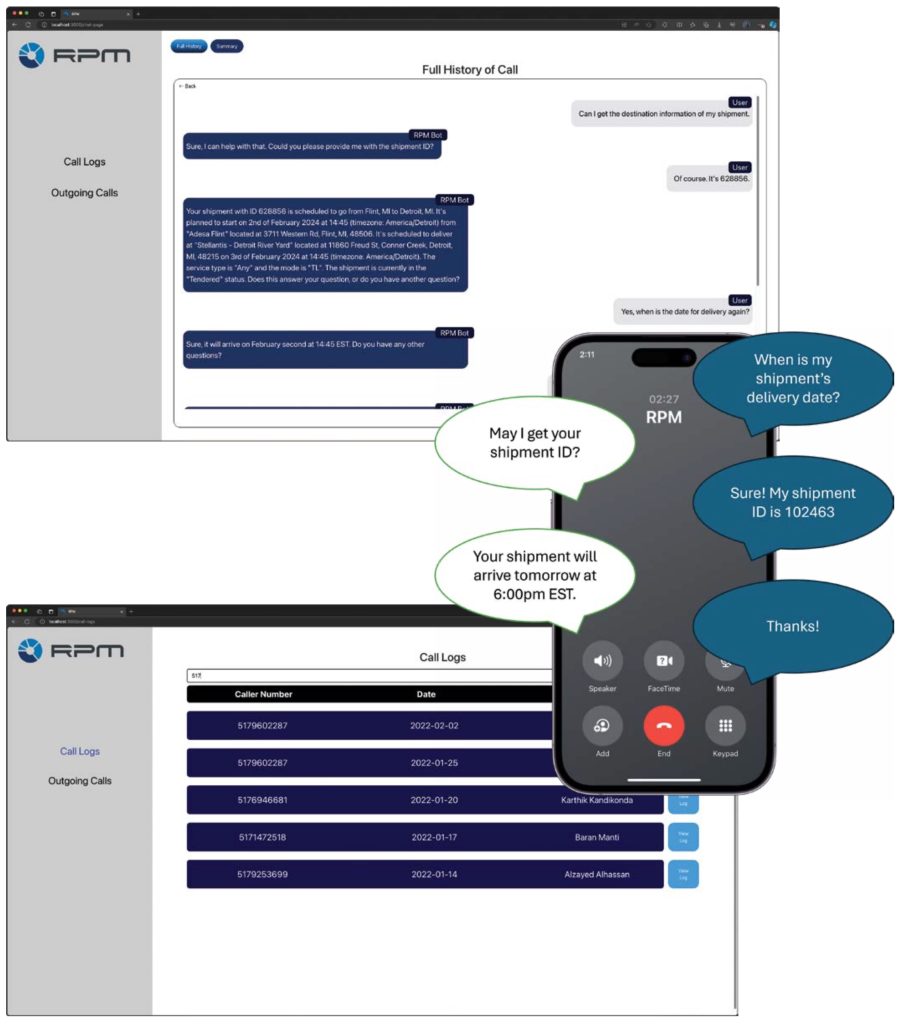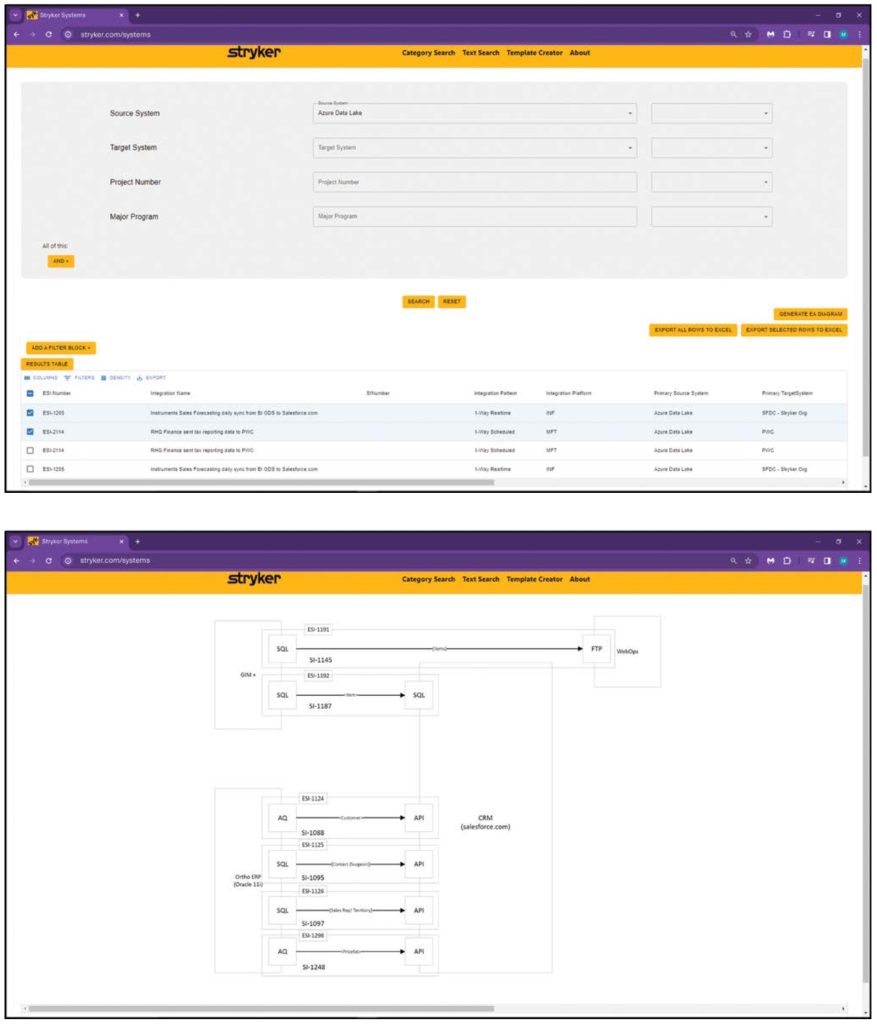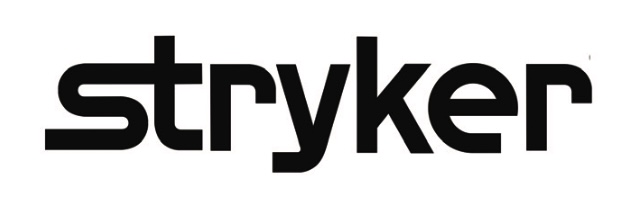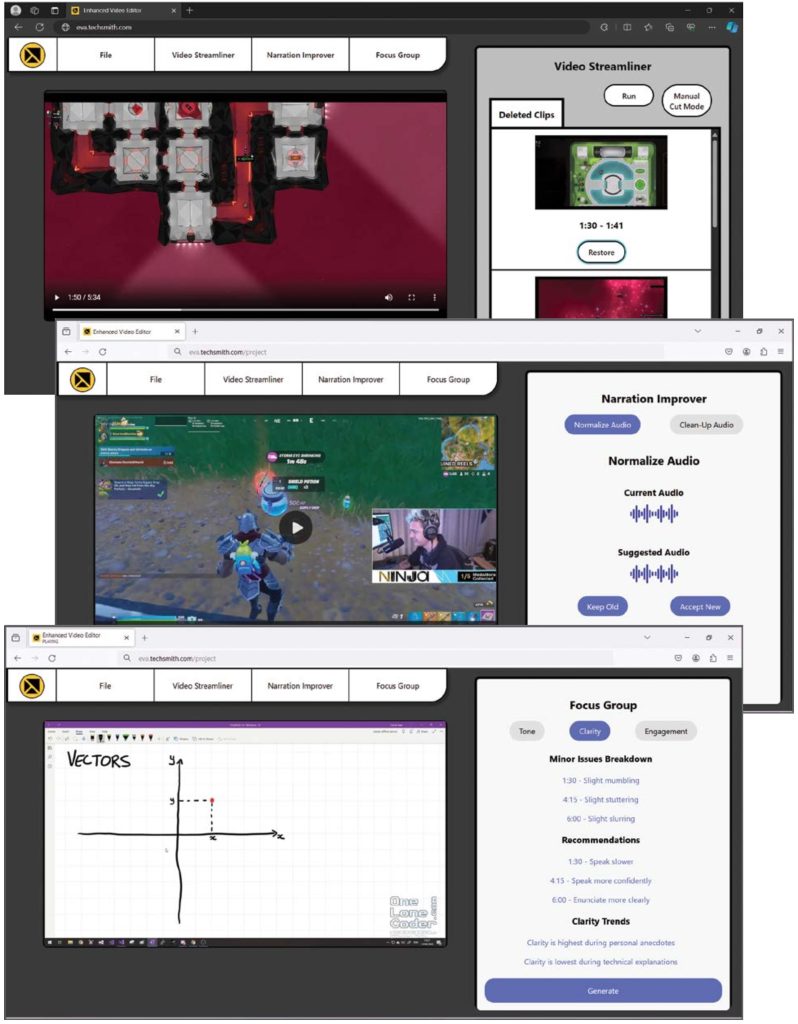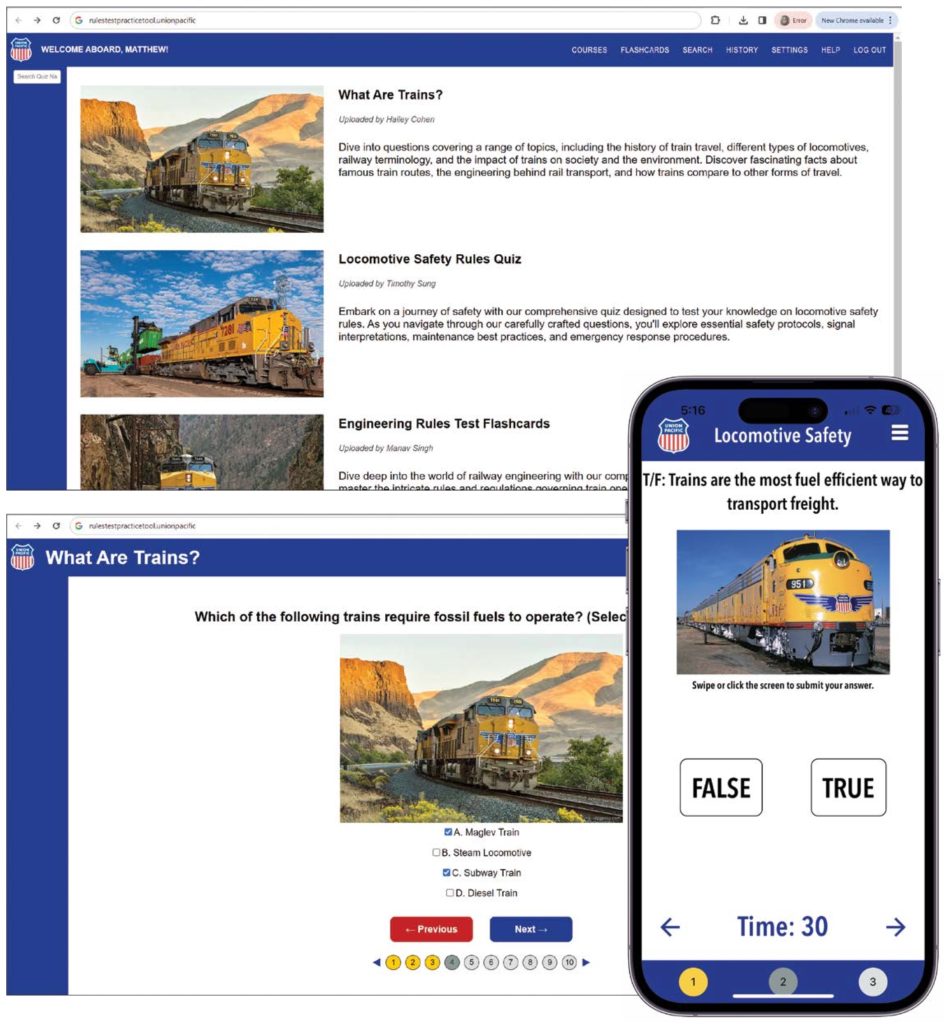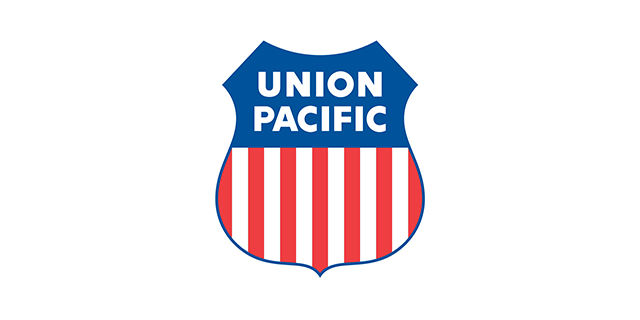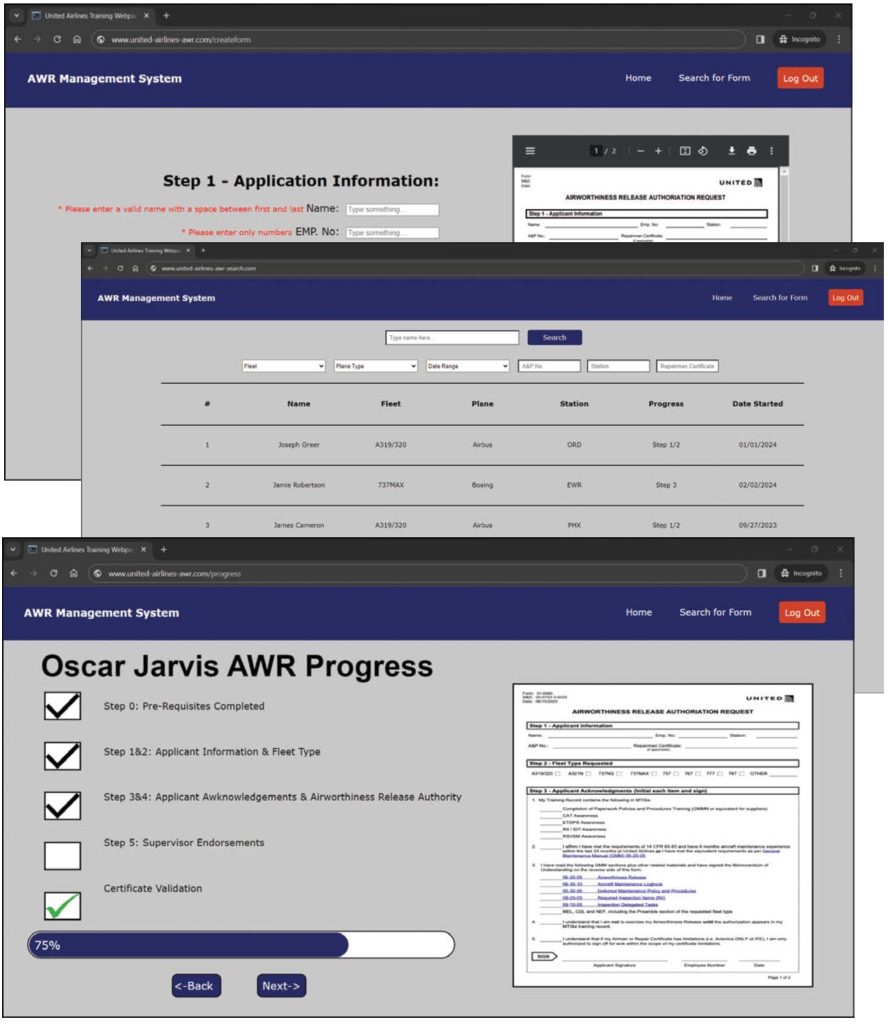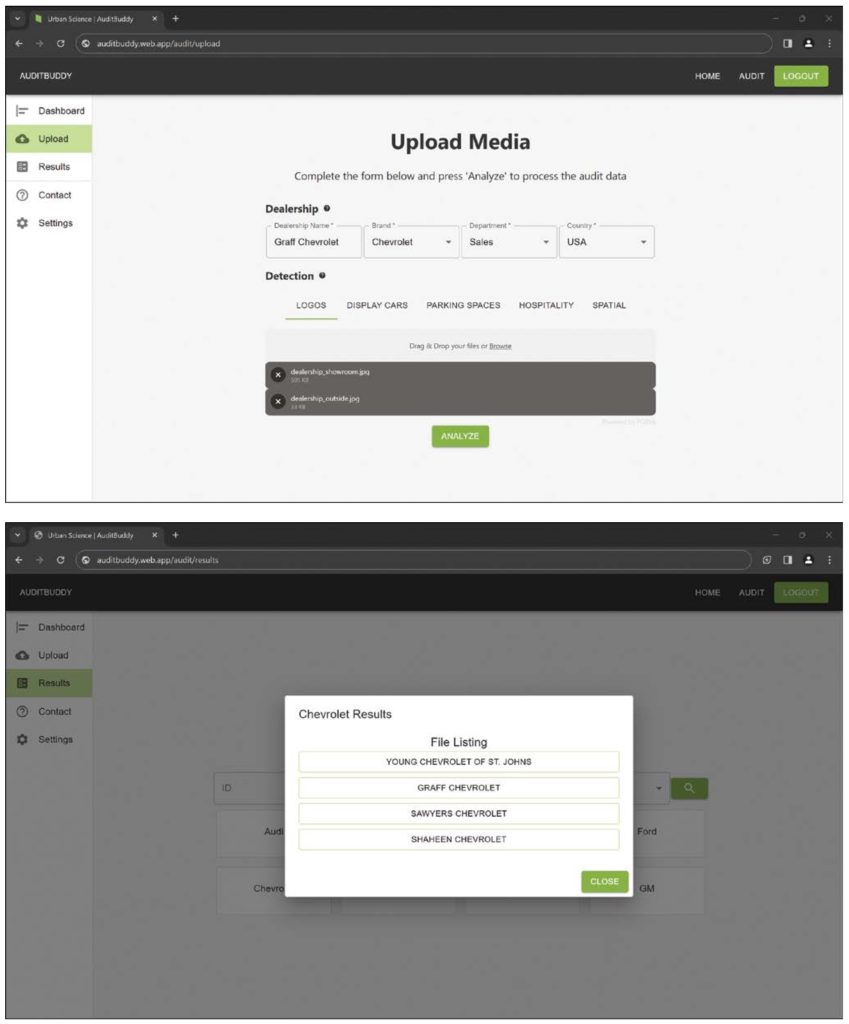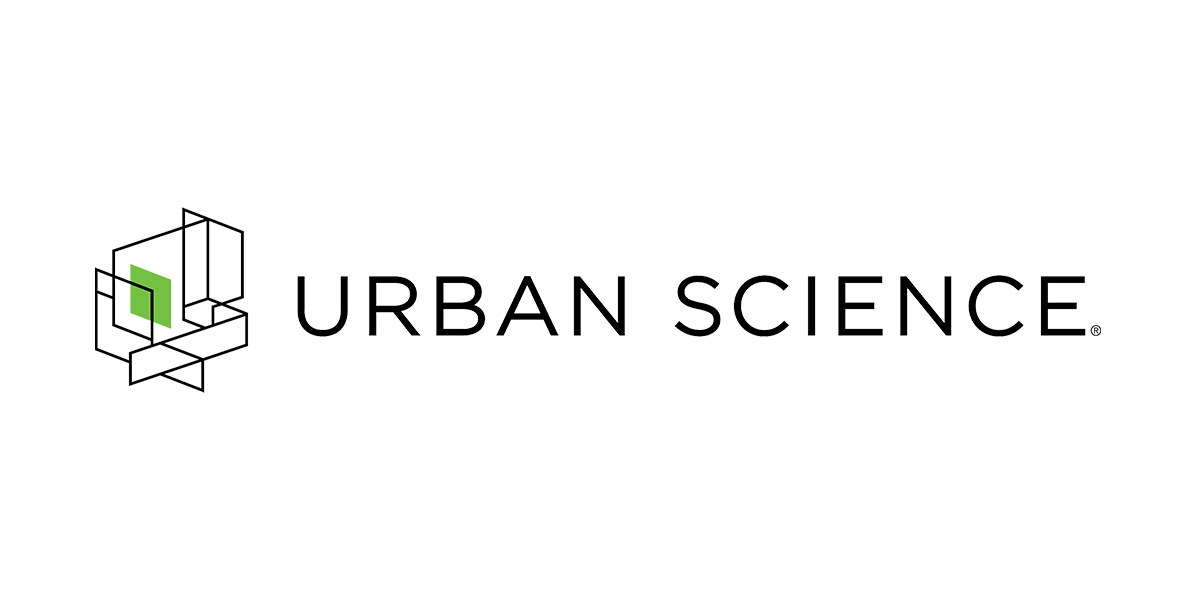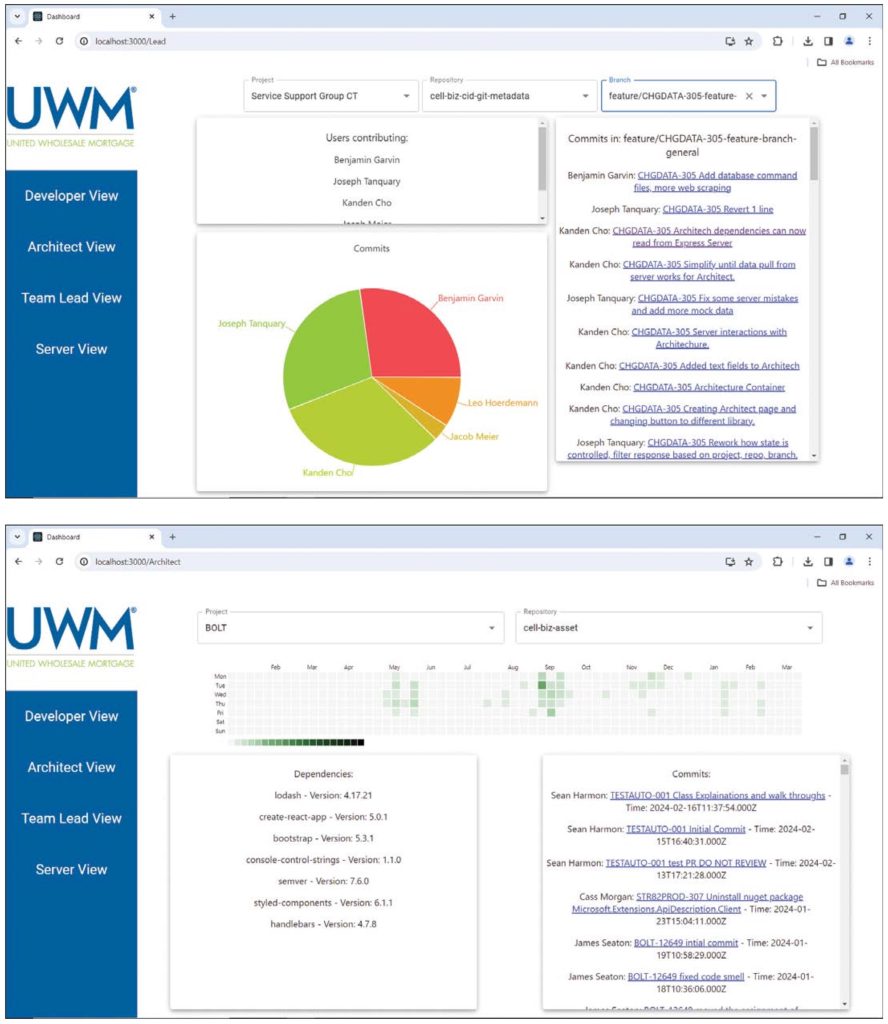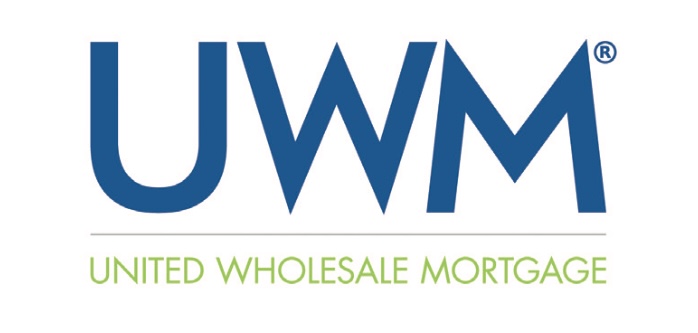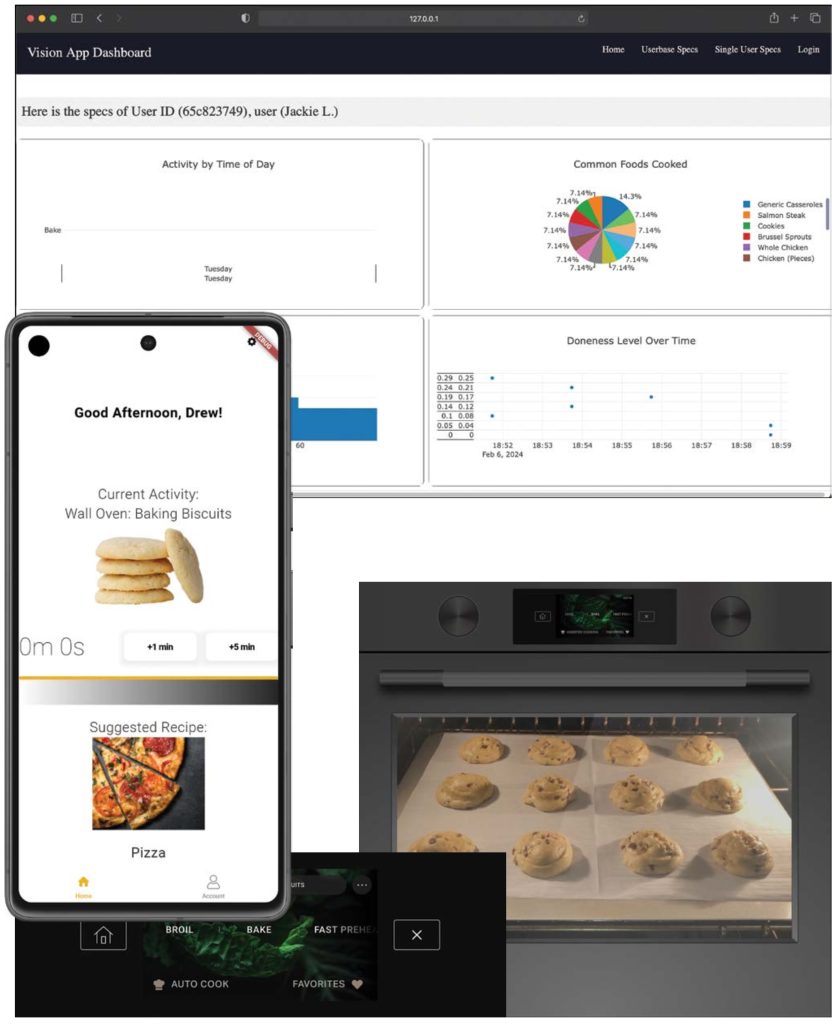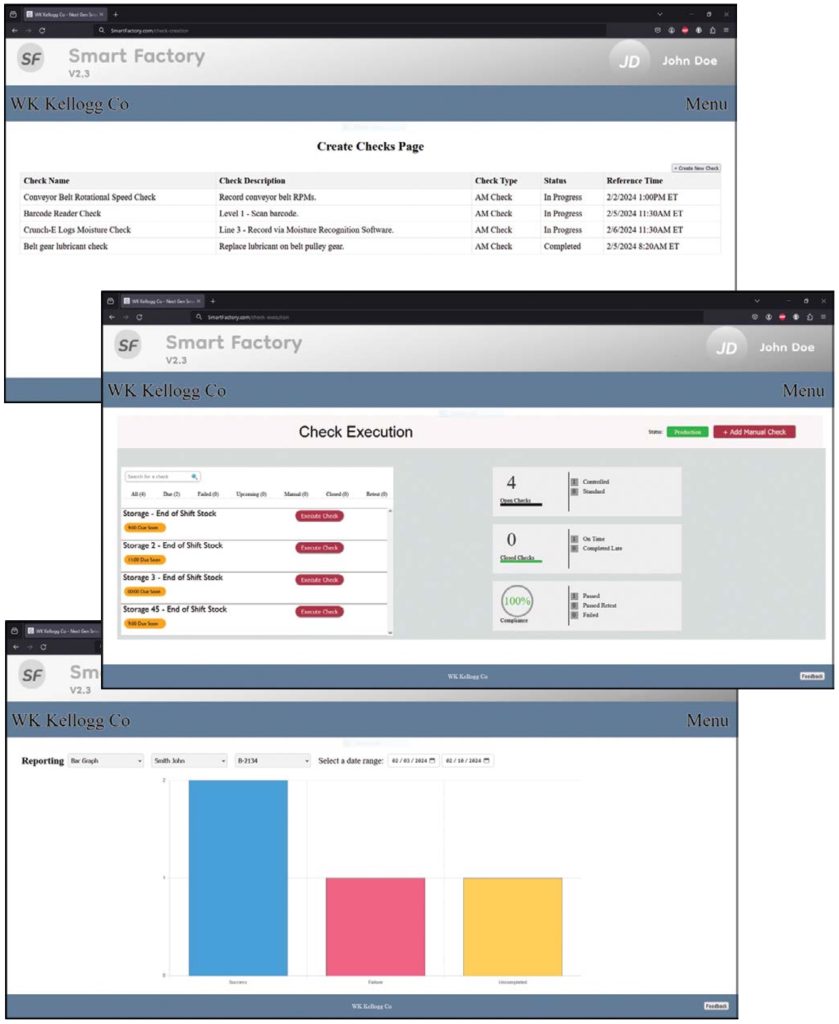Ally Financial: Shareholder Engagement Chatbot
Amazon: Employee Badge Image Validation Tool
Anthropocene Institute: Vessel Classifier for Marine Monitor (M2).
Auto-Owners Insurance: Policyholder’s Interactive Guide (PIG)
DRIVEN-4: DRIVEN-4 Connect Application, Server and Backend
Elektrobit: Automotive Software Integration In Virtual 3D
Evolutio: Evo Project Reporting Tool
Ford Motor Company: Dealer Experience Dashboard
General Motors: Recovery of Lost and Stolen IT Assets
Google: Android Vulnerability Database
HAP: Artificial Intelligence (AI) Training Course
Lockheed Martin Space: SmartSatTM AI Acceleration in Space
Ludus: Digital Playbill Builder
Magna: 3D Model for Factory Digital Twin Using WebGPU
Meijer: Supply Chain Induction Visibility Using Witron
Michigan State University: clUML: A Browser-Based UML Editor
Michigan State University: Enviroweather Mobile
MillerKnoll: Product Lifecycle Tracing System
MSU Federal Credit Union: Personalized Augmented Reality Experience
Roosevelt Innovations: Microsoft Excel Data Extractor/Modeler
RPM: Voice Transcription System
Stryker: Dynamic Visualization of Architecture Diagrams
TechSmith: Enhanced Video Assistant (EVA)
Union Pacific: Rules Test Practice Tool
United Airlines: Airworthiness Release Management System
Urban Science: AuditBuddy
UWM: IT Datamart Microservice for BitBucket
Vectra AI: Hybrid Cyberattack Simulator
Whirlpool Corporation: Personalizing the Culinary Experience
WK Kellogg Co: Next Gen Smart Factory
Ally Financial: Shareholder Engagement Chatbot
Ally Financial, headquartered in Detroit, Michigan, is a leading entity in the U.S. financial services industry, known for its extensive list of offerings including banking, investing, and auto financing. With a strong customer base that includes over 2 million depositors and 4.5 million individuals utilizing its financing and leasing options, Ally is at the forefront of revolutionizing financial interactions through technology.
In today’s financial landscape, investors are faced with the daunting task of sifting through vast amounts of information to make well-informed decisions. As a result, investors sometimes struggle to obtain the specific information they need about Ally promptly and effectively. There is a need for straightforward access to financial insights without the constraints of traditional research methods.
Our Shareholder Engagement Chatbot is an artificial intelligence-powered solution that enhances investor relations and addresses the obstacles associated with obtaining financial information. It enables investors to navigate the complexities of dense financial reports in a quick and conversational manner, while staying on topic and protecting any private information.
Available to the public and equipped with the most up-to-date information, the chatbot provides real-time responses to financial queries. Source citations are provided that include document links for transparency, along with example questions to guide investors who may need a starting point for their inquiries.
Our system quickly and effectively answers shareholders’ questions, improving relations and transparency.
Our software is written in Python and JavaScript, leveraging multiple Amazon Web Services for authentication, data storage, and deployment. Its generative capabilities derive from interfacing LangChain with Amazon Bedrock’s foundation models.
Michigan State University
Team Members (left to right)
Marshal DiGiovanni
Marysville, Michigan
Will Feddern
Cary, North Carolina
George Hunt
St. Charles, Illinois
Juan Sabogal Olarte
Chia, Cundinamarca, Colombia
Treasure Puso
Maun, North West, Botswana
Ally
Project Sponsors
Divyesh Jambusaria
Detroit, Michigan
Catherine Jardines
Detroit, Michigan
Dan Lemont
Detroit, Michigan
Susan Nord
Detroit, Michigan
Jesse Podell
Detroit, Michigan
John Stoutenger
Detroit, Michigan
Theresa Weaver
Detroit, Michigan
Kevin Werner
Charlotte, North Carolina
Amazon: Employee Badge Image Validation Tool
Amazon is a multinational technology company that has grown to become the world’s largest retailer. Founded in 1994 by Jeff Bezos, Amazon has since expanded into various industries, including cloud computing, digital streaming, and artificial intelligence.
As Amazon continues to grow, ensuring a quality employee onboarding process is paramount to supporting Amazon’s vision. An efficient onboarding process enables new employees to focus on transitioning without unnecessary delays or disruptions.
Currently, when Amazon hires a new employee, the employee uploads a photo to the employee badge verification system. This photo is manually checked against photo requirements by the Amazon verification team. This process can take days, slowing down the rate in which employees can join Amazon teams.
Our Employee Badge Image Validation Tool streamlines the new employee onboarding process by providing instant feedback on new employee badge photos.
Users simply need to upload their photo to the Employee Badge Image Validation Tool website in order to get feedback on their photo. When a photo is uploaded, our system uses machine learning models to test the validity of the new uploaded photo against standardized badge requirements.
The website displays feedback on photos and gives instructions on how they can improve their photo for the next upload.
Our tool not only saves time for new hires, enabling them to start faster and transition more smoothly into their roles, but also enables Amazon to dedicate more resources to delivering quality services to their customers.
Our web application is responsive and scalable due to a robust set of Amazon Web Services. The front end is hosted on AWS Amplify and back- end requests are handled by API Gateway, Lambda, Rekognition, and S3.
Michigan State University
Team Members (left to right)
Arul Srivastava
Northville, Michigan
Katelyn Hurst
Grand Rapids, Michigan
Jack Hammond
Shelby Township, Michigan
Timmy Wu
Grand Rapids, Michigan
Khloe Hayes
Lowell, Michigan
Amazon
Project Sponsors
Manasa Dantu
Detroit, Michigan
Garret Gaw
Detroit, Michigan
Derek Gebhard
Detroit, Michigan
Stefan Najor
Detroit, Michigan
Ed O’Brien
Detroit, Michigan
Sean Whipple
Detroit, Michigan
Anthropocene Institute: Vessel Classifier for Marine Monitor (M2)
The Anthropocene Institute is an organization based in Palo Alto, California, focusing on exploring solutions to tackle climate change. With a goal of solving the climate problem by 2030, the Anthropocene Institute connects investors, entrepreneurs and policymakers with research groups and experts, while assessing research claims and viability.
Marine conservation is a key part of maintaining and healing entire ecosystems and populations that depend on the ocean. Focusing on enforcing and monitoring marine conservation and no-fishing zones, ProtectedSeas, a partner of the Anthropocene Institute, utilizes cameras on their land-based radar systems to capture images of vessels near protected zones to ensure compliance. Using these images, ProtectedSeas is creating ship-identifying AI models and must perform the time-consuming task of hand-labeling thousands of images for model training.
Our Vessel Classifier for Marine Monitor (M2) takes input images and identifies whether a ship is present using machine learning, automating the labeling process, saving time and effort.
The system runs on a website that takes in user images and automatically labels them using a model trained periodically on the vessel dataset. If the model is not at least 90 percent confident with its label, the user is prompted to manually classify said image. The user can also access all the images from that session to override their automated labels. The images and their labels are added to ProtectedSeas’ database to train their ship-identifying models as well as the system itself periodically.
Using our system, training AI is more efficient than ever before, giving ProtectedSeas more time to keep the ocean protected.
Our Vessel Classifier for Marine Monitor (M2) runs on a Flask website containerized in Docker for ease of migration and uses a PyTorch computer vision model for image classification.
Michigan State University
Team Members (left to right)
Jared Singh Sekhon
Kuala Belait, Belait, Brunei Darussalam
Connor Horton
Monterey, California
Jacob Stacy
Southgate, Michigan
Paulina Bies
Dearborn Heights, Michigan
Anthropocene Institute
Project Sponsors
Melinda Alankar
Denver, Colorado
Samantha King
Boston, Massachusetts
Frank Ling
Tokyo, Japan
Carl Page
Palo Alto, California
Virgil Zetterlind
Pensacola, Florida
Auto-Owners Insurance: Policyholder’s Interactive Guide (PIG)
Founded in 1916, Auto-Owners Insurance is a Fortune 500 company employing more than 4,700 associates, and providing nearly 5.6 million insurance policies across 26 states. Auto- Owners has been headquartered in Lansing, Michigan for over 100 years.
Auto-Owners offers a wide range of vehicle coverage. Navigating through the intricacies of the various vehicle insurance policies can be overwhelming. To help mitigate this, Auto-Owners is looking to create comprehensive ways for policyholders to learn more about loss prevention and insurance for vehicle parts.
Our Policyholder’s Interactive Guide (PIG) is an augmented reality application that enables users to interact with vehicle parts and associated insurance coverage information in real time using the Microsoft Hololens 2.
Once wearing the HoloLens 2, users select from three distinct modes: panel, full virtual object, and object detection. In panel mode, users are presented with a list of vehicle components in which they choose a component from a simple two-dimensional menu to learn more about.
In full virtual object mode, users select a fully virtual vehicle model. Once selected, the three-dimensional vehicle model appears and the user can view different vehicle components on the model to reveal in- depth insurance information about that object.
Lastly, in object detection mode, the user can approach various components on real-world vehicles and the system provides the user with coverage information.
Using our system, Auto-Owners’ policyholders save time and money, and are provided the best possible customer service experience.
The PIG: Policyholder’s Interactive Guide is built in Unity using the Mixed Reality Toolkit and is written in C#. Object detection uses
Azure Custom Vision to detect real-world objects.
Michigan State University
Team Members (left to right)
Chase Hawley
Jenison, Michigan
Daniel Sohn
Novi, Michigan
Cole Tackett
Warren, Michigan
Jake Rhodes
Macomb, Michigan
John Landers
Plainfield, Illinois
Auto-Owners
Project Sponsors
Tony Dean
Lansing, Michigan
Ross Hacker
Lansing, Michigan
Scott Lake
Lansing, Michigan
Julie Wilkinson
Lansing, Michigan
DRIVEN-4: DRIVEN-4 Connect Application, Server and Backend
For over 30 years, DRIVEN-4, based in St. Joseph, Michigan, has focused on and specialized in the areas of product lifecycle management (PLM), connected product development (IoT), connected operations (IIoT) and cybersecurity. Today, DRIVEN-4 strives to create innovative software solutions for its clients.
The DRIVEN-4 Connect Module is a programmable logic controller (PLC) that, through on-board sensors and network connectivity, is customizable to fit end-user needs. Managing user modules, providing connectivity to modules, and analyzing data collected from modules requires an equally customizable solution.
Our DRIVEN-4 Connect Application provides a customizable and streamlined solution for end-users to interact with DRIVEN-4 Connect Modules. Through the Connect system, users can view provisioned modules, update module firmware, and analyze data collected and uploaded from modules.
A provisioned module is set up by the end-user and specifies the schema of collected data. Once set up, the Connect system generates a unique endpoint to facilitate the connection to the Connect Module. Through the generated endpoint, the Connect Module sends collected data for storage.
Collected data can be queried, analyzed, and visualized through a spreadsheet that enables for mathematical functions and visualizations through graphing.
Additionally, users can create custom dashboard widgets to display the most relevant data in a convenient location. A learning center is available for users to view tutorials, to view code snippets, and to download code libraries.
The DRIVEN-4 Connect web application front end uses HTML, CSS, and JavaScript. The back end is implemented using the Flask framework, MySQL databases, and SQLAlchemy to interact with databases.
Michigan State University
Team Members (left to right)
Zhiqiang Ni
Wuxi, Jiangsu, China
Zach Morris
Ovid, Michigan
Parker Morgan
Detroit, Michigan
Will Skaggs
Canton, Michigan
Ajuisiwon Azantilow
Kumasi, Ashanti, Ghana
DRIVEN-4
Project Sponsors
Fred Bellio
St. Joseph, Michigan
Ryan Slaugh
St. Joseph, Michigan
Carl Wendtland
St. Joseph, Michigan
Elektrobit: Automotive Software Integration In Virtual 3D
Founded in 1988, Elektrobit is a global automotive software company, headquartered in Erlangen-Tennenlohe, Germany with locations across multiple continents. Elektrobit is an industry-leading supplier of automotive software products and services, with their products powering over five billion devices in over 600 million vehicles.
To ensure safe driving, new vehicular innovations are constantly being researched. However, it is very costly to test these innovations in the field. Recently, Elektrobit released Corbos, a software suite that developers utilize in creating programs to be run on automobiles. These programs can include anything from infotainment displays to autonomous driving features. Elektrobit seeks a means to demonstrate the powerful and dynamic capabilities of their new Corbos product to customers.
Our Automotive Software Integration In Virtual 3D system demonstrates the capabilities of Corbos by responsively displaying important metrics from simulated vehicles to automotive engineers and testers through a dashboard-like interface.
The website displays several important features: A top-down view of the vehicle displays the distance and direction of nearby obstacles, a compass is used to dynamically show the direction of a simulated vehicle, and speed and RPM dials are displayed to illustrate these metrics as they would in a real vehicle.
Through our system, Elektrobit is able to display how Corbos is able to help the development of future vehicular innovations.
CARLA simulator, an open-source automobile simulator, is used to generate sensor data that is sent through a Python API to a Docker container. The data is processed and sent to a second Docker container, where a React user interface fetches data from a C++ application running alongside it. Communication between the containers is facilitated by the HPC Dev-Kit from Elektrobit.
Michigan State University
Team Members (left to right)
Logan Kania
Rochester, Michigan
Joshua Austin
Burton, Michigan
Tommy Wojan
Northville, Michigan
Alan Fierro
El Paso, Texas
Brandon Dutton
Monroe, Michigan
Duy Le
Hanoi, Hanoi, Vietnam
Elektrobit
Project Sponsors
Nathan Thelen
Farmington Hills, Michigan
Evolutio: Evo Project Reporting Tool
Evolutio is a software consulting company that specializes in delivering innovative solutions to complex technological challenges, empowering businesses to thrive within the tech industry. With approximately 33 employees, the company operates two offices, one in Chicago, and one in Manchester, UK.
Evolutio has many important clients who need data on their projects presented attractively in reports. However, exporting the relevant data from their internal tools and formatting it in a visually appealing and professional manner is a time-consuming process for the consultants and architects working on projects. Much of this work is repetitive and is the same from week to week.
Our Evo Project Reporting Tool makes report generation easy with a web-based report generation tool that integrates with Evolutio’s existing project management tools. Our tool pulls the necessary data for a project and produces high quality PDF reports alongside other exportation formats such as JSON and CSV, that can be provided to stakeholders at all stages of an engagement.
Utilizing the Asana API for real-time data extraction, our software ensures information is consistently updated, providing users with the most current project insights. Our software meticulously processes this data, facilitating its smooth presentation for an intuitive user experience.
Through our tool, Evolutio generates attractive reports with ease, allowing them to focus on making technological strides.
The technological backbone of the Evo Project Reporting Tool includes Next.js and ReactJS for a responsive front-end interface, complemented by a Node.js and Express framework back end. This setup is optimized for efficient data management and seamless user interaction. Okta’s authentication system enhances security, while Asana’s API integration ensures real-time project updates, maintaining operational efficiency and data accuracy.
Michigan State University
Team Members (left to right)
Ammar Elkafrawy
Kalamazoo, Michigan
Rushil Mantripragada
Novi, Michigan
Juanqui Faure
Dorado, Puerto Rico
Satya Byreddy
Troy, Michigan
Arjun Gupta
New Delhi, Delhi, India
Evolutio
Project Sponsors
Jordan Cobe
Lansing, Michigan
Jon Dressel
East Lansing, Michigan
Bob Dyksen
St. Louis, Missouri
Adam Ties
Chicago, Illinois
Laura Vetter
Indianapolis, Indiana
Ford Motor Company: Dealer Experience Dashboard
Ford Motor Company is an international automotive manufacturer headquartered in Dearborn, Michigan. With nearly 175,000 employees and producing about 6.4 million vehicles globally, Ford stands as one of the top ten automakers worldwide.
Dealerships are facing stiff competition in the market. Tracking performance across dealerships is pivotal in our modern information age. Ford dealers need to be constantly innovating and improving to ensure success in the automotive industry.
Our Dealer Experience Dashboard streamlines and modernizes the access and analysis of critical information to drive future sales for Ford dealers.
Dealers interact with our dashboard to generate reports of the key data metrics they are interested in analyzing, for example, sales, repair orders, vehicle deliveries, etc.
We offer significant customization options so that each dealer can focus on what matters to them. Our dashboard also boasts extensive data visualization tools, enabling users to quickly and effortlessly comprehend complex data through charts and graphs.
After a dealer finishes their data analysis, our dashboard generates a report of the data, visualizations, and overall analysis. This report is then shared with any relevant entities to help improve the overall dealer performance.
Our system automates real-time updates, keeping dealers informed of any changes or trends in dealership performance.
Our software shows sales trends and identifies key areas of growth in dealerships, improving sales and increasing revenue. All the information analysts need to see is now condensed in a few easy-to-use web pages along with easy ways to share these reports.
Our UI is primarily written in JavaScript and developed using React for the front end, Express to talk to the server, and Google’s BigQuery to handle the data.
Michigan State University
Team Members (left to right)
Aditya Venkata Krishna
Novi, Michigan
Fangjun Huang
Jiaxing Haiyan, Zhejiang, China
PJ Desrochers
Commerce Township, Michigan
Abel Diaz-Valdez
Kent City, Michigan
Andrew Naumoff
Wheaton, Illinois
Aparna Anand
Novi, Michigan
Ford
Project Sponsors
Jeff Kalman
Dearborn, Michigan
Kala Pinnu
Dearborn, Michigan
Madhavi Poluru
Dearborn, Michigan
Sasikala Rajasekaran
Dearborn, Michigan
Alec Wilhoite
Dearborn, Michigan
General Motors: Recovery of Lost and Stolen IT Assets
General Motors (GM) is a multinational automotive company based in Detroit, Michigan. GM produces and sells some of the top performing vehicles including Buick, Chevrolet, GMC and Cadillac totaling 2.6 million vehicles sold worldwide.
With over 165,000 employees internationally, GM provides a variety of devices to their employees to assist with their work. With all these devices it is inevitable that some are lost or stolen, exposing vulnerabilities to proprietary data and applications. To mitigate this vulnerability GM must go into the device and perform a manual shutdown to revoke access.
Our Recovery of Lost and Stolen IT Assets system streamlines the process of remotely shutting down lost or stolen devices. Our software makes it easy to detect when a device has been misplaced, at which point the device is then automatically locked until it is returned or an administrator logs in.
Once an IT administrator marks a device’s location as unknown, a signal is sent out to the device through network communications. On receipt, the lockdown initiation begins by disabling all other users except the administrator account, which is reset with a new password. After lockdown, a confirmation email is sent back confirming the device’s status. Upon relocating the device, the IT administrator can log in and recover data held on the devices. This prevents the use of the device and incentivizes its return to GM.
Our software automates the remote lockdown process of GM devices and gives employees the ability to check the status of a device as well. This increases the security of the proprietary data and applications.
Our front end is built with JavaScript, HTML and CSS. The back end is built on a Dockerized Flask application running PowerShell scripts and Python. Finally, our database utilizes PostgreSQL.
Michigan State University
Team Members (left to right)
Auden Garrard
Grand Rapids, Michigan
Hunter Jones
Bloomfield Hills, Michigan
Joel Marshall
Highland, Michigan
Jemin Han
West Bloomfield Township, Michigan
Seth Youngstrom
Roswell, Georgia
GM
Project Sponsors
Avery Belton
Warren, Michigan
James Currie
Warren, Michigan
Joe Gleason
Warren, Michigan
Spencer Searle
Warren, Michigan
Google: Android Vulnerability Database
Google, founded by Larry Page and Sergey Brin in 1998, is the world’s largest search engine with its 92% market share. Google offers more than 50 services such as Gmail, Chrome, and the Google Cloud Platform.
One of Google’s many services is Android, an operating system designed for mobile devices. Every year, hundreds of security vulnerabilities are remediated on over three billion Android devices. Google’s Android Security Bulletin communicates information on vulnerabilities to Google’s partners and is matched to reports in the National Vulnerability Database (NVD). These data sets are critical to security experts, but additional effort is required to collect and combine the data from both sources.
Our Android Vulnerability Database consolidates information from the bulletins and data from the NVD in one place and enables users to access that information via the web.
Our tool illustrates metrics that are found in the databases in an attractive, easy-to-use format so experts can survey vulnerabilities with ease.
The most important metric is the base score which indicates the overall severity of the vulnerability and helps security experts to prioritize certain vulnerabilities as they develop fixes.
Security experts can access the consolidated data set via the web-facing application. They can retrieve information with prepared requests or tailor their requests to suit their specific needs.
The app also visualizes the data for users, helping them to analyze the information in an intuitive way, enabling Google employees to solve Android vulnerabilities easier than ever before.
Our tool is open source, hosted on Google Cloud Platform, and utilizes ETL methodology to manage the data. API calls are then used to retrieve data from cloud SQL databases.
Michigan State University
Team Members (left to right)
Trey Cosnowski
Rochester, Michigan
Omay Dogan
Umraniye, Istanbul, Turkey
Alex Bocchi
Gqeberha, Eastern Cape, South Africa
Seth Darling
Livonia, Michigan
Brendan Wieferich
Lansing, Michigan
Frederick Fan
Troy, Michigan
Project Sponsors
Shailesh Saini
Kirkland, Washington
HAP: Artificial Intelligence (AI) Training Course
HAP is a Detroit-based healthcare insurer that covers customers of all sizes whether they’re a corporation or an individual. With a workforce of roughly 1,100 employees, HAP provides for over 430,000 members.
With such a large number of customers, HAP is looking for ways to increase the productivity of its employees, and artificial intelligence (AI) is a new option. HAP is looking for a way to teach its managerial staff the basics of AI, such as popular large language models (LLMs), and different ways of using them.
Our Artificial Intelligence (AI) Training Course is an education platform with multiple modules that HAP employees can complete to gain an understanding of AI basics.
Since this covers the basics exclusively, the entire course takes only 15-30 minutes to complete. Content is presented in both text and audio/video format. The audio/video content is exhibited by an AI powered avatar, or “professor.” Additionally, the “professor” supports interaction with the user through a chat feature where the user can type or speak questions to receive specific and instant feedback.
Employees take the course module by module and test their retention of the content with mini quizzes. With the completion of this course, employees can leverage AI in their daily lives.
Training a work force to be proficient in the use of AI will enable HAP employees to be more efficient and more productive in the course of their work.
The front end of our application is powered by Next.js, TypeScript, and shadcn/ui for a professional user interface and experience. The back end of our application is powered by Python and FastAPI with MongoDB as the database for the course content. OpenAI powers the avatar’s interactivity and Docker containerizes both the front end and back end to be deployed to GCP.
Michigan State University
Team Members (left to right)
Caleb Story
Zeeland, Michigan
Advait Paliwal
Troy, Michigan
Joey Morrison
Troy, Michigan
Ashley Arciniega
Kalamazoo, Michigan
Vetri Vijay
Troy, Michigan
HAP
Project Sponsors
Angela Endres
Detroit, Michigan
Annette Marcath
Detroit, Michigan
Steve Neubecker
Detroit, Michigan
Lockheed Martin Space: SmartSatTM AI Acceleration in Space
Lockheed Martin Space, a division of Lockheed Martin, is headquartered in Littleton, Colorado. Employing over 20,000 people, Lockheed Martin Space is one of the largest aerospace companies in the nation.
The advancements of satellite technology in recent years has assisted Lockheed Martin Space in developing the SmartSatTM software development kit. SmartSatTM enables for the rapid development and deployment of satellite software.
Cameras are a crucial component of satellite systems, and the images they capture can be utilized to run image recognition software. However, these operations can be expensive and time- consuming if not properly optimized, which is quite difficult due to the delicate and complex satellite hardware and software systems.
Our SmartSatTM AI Acceleration in Space system deploys various image recognition software onto SmartSatTM hardware to find the optimal hardware for each model.
Our software targets specific hardware components on a given satellite using hardware accelerators. It enables the resources needed in running models on a satellite to be tracked and minimized. Examples of tracked metrics include, but are not limited to, runtime, throughput, and temperature.
The resulting metrics are visualized in an easy-to-use dashboard so Lockheed Martin engineers can easily view optimal components.
Our software enables efficient deployment of image recognition models onto various satellite hardware components. Through our tool, Lockheed Martin Space can easily cut down on the cost of expensive satellite resources, ensuring they are able to keep making exciting advancements in satellite innovation.
Our AI models are compiled by Vitis AI and ONNX Runtime and deployed onto the Xilinx ZCU102 and NVIDIA Jetson TX2. Benchmarking results are displayed using an AimStack dashboard.
Michigan State University
Team Members (left to right)
Kellen Lear
St. Joseph, Michigan
Susanne Constantakis
Dearborn Heights, Michigan
Benny Kavara
Ada, Michigan
Josiah Klann
Brighton, Michigan
Lockheed Martin Space
Project Sponsors
Kelsey Cannon
Littleton, Colorado
Josh Davidson
Littleton, Colorado
Joe Epstein
Littleton, Colorado
Brandon Hearn
Littleton, Colorado
Elliott Hoefflin
Littleton, Colorado
Jacob Kohav
Littleton, Colorado
Dominic Mazza
Littleton, Colorado
Nicole Saro
Littleton, Colorado
Mark Vedette
Littleton, Colorado
Ludus: Digital Playbill Builder
Based out of Holland, Michigan, Ludus is a software-as-a-service (SaaS) company providing various services to 2000+ performing arts organizations of all sizes across the United States. Initially just a ticketing platform, Ludus has since expanded to include marketing, fundraising and streaming.
Many performing arts organizations now utilize digital platforms when selling and distributing tickets. However, paper is still the standard for playbills, which can be costly to develop and print. Ludus’ latest initiative is to transition from the use of traditional paper playbills into a digital system.
Our Digital Playbill Builder is a web application that consolidates the creation and the distribution of playbills all in one easy-to-use tool. Organizations create custom playbills in a drag-and-drop document builder from a selection of premade elements such as images and textboxes. The user also has the option to upload custom media, designs, and advertisements.
Users can fully customize their digital playbills to be accessible on all devices. Once the design is ready to be viewed by the public, users publish their playbill with the click of a button and easily share a public URL or printable QR code where the playbill can be accessed by the audience.
Our playbill builder creates a unique way for theaters to distribute playbills, provides patrons with a new and exciting interactive experience, and eliminates the costs associated with standard paper playbills.
The Digital Playbill Builder is developed as a PHP application backed by the Laravel framework and standard web development languages, including JavaScript, HTML and CSS. The rendering engine for the interactive elements and playbill editor is powered by GrapesJS. All stored data for this tool lives within a secure and managed MySQL 8 database.
Michigan State University
Team Members (left to right)
Alayna Johnson
Jamestown, New York
Courtney Thang
Grand Rapids, Michigan
Joe Davis
Wyandotte, Michigan
Swetha Jagannathan
Canton, Michigan
Yufan Ai
Shenzhen, Guangdong Province, China
Ludus
Project Sponsors
Zackary Collins
Holland, Michigan
Ben St. John
Holland, Michigan
Magna: 3D Model for Factory Digital Twin Using WebGPU
Founded in 1957, Magna has established itself as a pioneering force in the global automotive industry. With over six decades of experience, it is more than just a supplier; it is a visionary leader, driving the evolution of the automotive industry.
Managing an entire factory is difficult. With moving machinery, containers, and various supplies, keeping track of everything means walking through the factory and locating objects as needed, which can be very time-consuming. While some of the necessary information is digitalized, Magna currently has no centralized resource for all its factory data.
Our 3D digital factory twin web app using WebGPU fixes this problem by creating a way for managers to view a digital model of their factory. The system enhances the efficiency and convenience with which floor managers can supervise their facilities.
Our system enables employees to create digital models of their factory by importing files to portray all the various parts and objects. Objects are then translated and rotated to be placed in their correct spot on the factory floor.
Once the model is built, an outline list on the screen displays all relevant objects within the digital factory twin. If more information on an object is desired, clicking the object in the list brings up a menu showing its position, name, object ID, and other relevant data.
Live data updates and alert statuses are visually represented. For a given object, if a sensor identifies readings above a set threshold, such as a high temperature, the alert system is triggered. The user is then notified with the object details and the object is highlighted within the digital twin so it can be monitored.
The front end is built with Vue for the UI and WebGPU via Orillusion for 3D Rendering. The back end is built in Docker with MongoDB for file storage and EMQX MQTT Broker for handling real-time data transmission.
Michigan State University
Team Members (left to right)
Jacob Yax
Lake Orion, Michigan
Gabe Kubiak
Rochester Hills, Michigan
Cody Girard
Sterling Heights, Michigan
Joey Vesche
Novi, Michigan
Alan Feng
South Lyon, Michigan
Logan Gillis
Holland, Michigan
Magna
Project Sponsors
Jim Quesenberry
Troy, Michigan
Raidu Rayasam
Boston, Massachusetts
Chantal Ruggaber
Troy, Michigan
Sundar Selvaraj
Boston, Massachusetts
Meijer: Supply Chain Induction Visibility Using Witron
Meijer is the premier retailer of the Midwest, carrying over 220,000 different products at more than 270 supercenters. Offering such a robust collection of items for purchase, Meijer has and continues to make many innovations in the field of supply chain management, one such innovation being Meijer’s automated warehouses.
Through their partnership with the German engineering company Witron, Meijer has revolutionized the storage and management of dry groceries, ensuring operational efficiency. One challenge that Meijer faces is the lack of transparency and visibility that a hyper-efficient system creates. This lack of transparency can lead to difficulties pinpointing inefficiencies and disruptions in the supply chain.
Our Supply Chain Induction Visibility Using Witron dashboard improves transparency by visualizing real-time induction station data and displaying it to employees on the warehouse floor using wall- mounted monitors.
Our dashboard integrates data from both Witron and Meijer, streamlining it onto a singular and concise user interface. The data displayed offers detailed insights into pallet induction, including the number of pallets inducted, rejected, and remaining, ensuring a comprehensive view of each station’s operations.
Additionally, the web version of our application enables users with the proper credentials to access an administration page that is configured for both desktop and mobile web browsers. This webpage provides more in-depth statistics for each station and shows efficiency across the entire warehouse, equipping administrators with the information needed to optimize operations.
Our web application is written in C# using .NET Core 8. It is connected to our front end using Microsoft Blazor and is updated on a MySQL database hosted on Microsoft Azure.
Michigan State University
Team Members (left to right)
An Le
Hanoi, Hanoi, Vietnam
Nick Noga
Rochester, Michigan
Paul Williams
Grand Rapids, Michigan
Nick Marshall
St. Clair Shores, Michigan
Soham Sonar
Northville, Michigan
Meijer
Project Sponsors
Ariel Firon
Grand Rapids, Michigan
Craig Harestad
Grand Rapids, Michigan
Phil Kane
Grand Rapids, Michigan
Terry Ledbetter
Grand Rapids, Michigan
Randy McClary
Grand Rapids, Michigan
John Morrison
Grand Rapids, Michigan
Michigan State University: clUML: A Browser-Based UML Editor
Michigan State University’s Department of Computer Science and Engineering (CSE) delivers acclaimed courses to over 2,000 students every semester in various computer science-related disciplines. Some of these courses use a system of in- house software called CourseLib to build custom websites.
Students taking the department’s software design course use Unified Modeling Language (UML) diagrams to visualize the structure of their software, which is a crucial step in the design process. Until now, CSE has relied on a third-party desktop application called Visual Paradigm to create UML diagrams.
clUML is a browser-based UML editor. This eliminates the department’s dependency on Visual Paradigm and provides a practical way for students and instructors to create and edit UML diagrams directly on the course website, using any modern web browser.
Students can check their diagrams for redundancy, improve their solutions based on instant feedback, and submit diagrams to be graded. Instructors can embed UML diagrams in assignment pages and quizzes, enabling more efficient grading and reducing the workload for course staff.
clUML supports editing multiple diagrams simultaneously in separate tabs. When creating a new tab, the user specifies whether it should hold a class or object diagram. This determines which components are available.
The front-end interface is implemented in JavaScript, HTML and Sass and works in all modern web browsers. The back end is a PHP package that the owner of a CourseLib website can install using Composer. We use DOMPurify to sanitize user input, Jasmine for JavaScript unit testing, and Karma to facilitate testing the user interface across multiple browsers.
Michigan State University
Team Members (left to right)
Cam O’Connor
Davison, Michigan
Isabella Engelman
Lathrup Village, Michigan
Derek Hubler
Farmington Hills, Michigan
Colin Davidson
Canton, Michigan
Benny Schulz
Wilmette, Illinois
Luke Soumis
Ontonagon, Michigan
Michigan State University CSE
Project Sponsors
Charles Owen
East Lansing, Michigan
Michigan State University: Enviroweather Mobile
Enviroweather is a free online resource that provides Michigan farmers and agricultural stakeholders with weather-based tools to help them make pest, disease, plant-production and natural resource management decisions. Enviroweather provides more than 60 different weather, pest, disease and crop predictors.
These prediction models provide Michigan agriculturalists with essential data that they can utilize to make informed decisions regarding farm management.
Approximately half of Enviroweather’s users access their website via a mobile phone while in the field. However, the current website is not optimized for mobile devices, which leads to difficulties loading and accessing data.
Our Enviroweather Mobile application solves this problem by providing users a way to access Enviroweather’s models through an app that is designed and optimized for mobile use. The app is downloaded onto mobile devices and enables users to view all of Enviroweather’s helpful metrics in a seamless and easy-to-use way.
Our mobile app contains all of the models that are found on the Enviroweather website. One example is a model that displays information about current and forecasted weather conditions such as temperature and precipitation.
Enviroweather Mobile also contains new and unique models that provide more specific information to agriculturalists to assist in crop management. These models include insights on leaf wetness, soil moisture, and crop pests and diseases.
Having these models in an easy-to-use mobile app enables agriculturalists to make informed decisions about crops, animals, plant diseases, and more.
The front end of our app uses React Native, JavaScript, and CSS. The back end is composed of Enviroweather’s API and the National Weather Service’s API.
Michigan State University
Team Members (left to right)
James Noh
Bloomfield Hills, Michigan
Haoxiang Zhang
Longwan, Zhejiang, China
Malachi Hollins
Ypsilanti, Michigan
Emily Dubuque
Harrisville, Michigan
Michael Moss
Canton, Michigan
Frederick Pagadam
Kumasi, Ashanti Region, Ghana
Michigan State University Enviroweather
Project Sponsors
Tracy Aichele
East Lansing, Michigan
Jeff Andresen
East Lansing, Michigan
Pat Bills
East Lansing, Michigan
Jim Brown
East Lansing, Michigan
Keith Mason
East Lansing, Michigan
MillerKnoll: Product Lifecycle Tracing System
MillerKnoll, formerly known as Herman Miller, is renowned for its contemporary interior design and ergonomic furniture. Headquartered in Zeeland, Michigan, they are a leading producer of home and office goods and inventors of the office cubicle.
Businesses frequently require specialized furniture for their office space. MillerKnoll services this need with their made-to-order business model. Its level of customizability generates vast amounts of unique data about products and their corresponding components. Manually navigating this information requires a deep understanding of their current inventory and legacy data management systems.
Our Product Lifecycle Tracing System is a web application that provides a centralized, user-friendly way to find product information. Users search for a component and receive basic information about the item, such as its current stock, manufacturing location, and latest order and ship dates.
When searching for a product, users are provided with a summary of its metadata. They can simulate the product’s discontinuation and view the impacts on each of its associated components. The software displays components that can be safely removed from the supply chain, while flagging those that other products depend on.
Our system establishes relationships between parts and products. It determines how integral specific components are to the product lineup. It gives insight into how resources can be better allocated, supporting supply and product managers in making informed decisions regarding production volumes.
Our front-end software is built using Next.js, ensuring responsiveness when processing large quantities of data. The back- end software is built with Express.js, which queries a Snowflake database to serve information to the front end.
Michigan State University
Team Members (left to right)
Ashley Jarria
St. Joseph, Michigan
David Xiong
Detroit, Michigan
Keshav Babu
Canton, Michigan
Felix Liang
Troy, Michigan
Mohammad Zaman
Warren, Michigan
MillerKnoll
Project Sponsors
Eric Crouthamel
East Greenville, Pennsylvania
Ken Greer
Zeeland, Michigan
Allison Lucas
Zeeland, Michigan
Amanda O’Neil
East Greenville, Pennsylvania
Derek Torrey
Chicago, Illinois
MSU Federal Credit Union: Personalized Augmented Reality Experience
Established in 1937, MSU Federal Credit Union (MSUFCU) has been serving Michigan State University and the greater Lansing area for over 84 years. With over 20 branch locations statewide, 361,000 members, and managing nearly $7.71 billion in assets, MSUFCU strives to help its local communities thrive and achieve financial freedom.
When visiting a branch, MSUFCU currently provides a standard check-in process that requires a member to input their name and wait for an attendant to assist them. As modern technology continues to advance, MSUFCU is looking to introduce a streamlined and personalized on-site experience.
Our Personalized Augmented Reality Experience is a mobile application and web application that provides customers visiting a branch with a digital, yet personalized, experience by offering recommendations for their visit based on a customer’s predicted purpose for visiting the branch.
The user begins the experience by using our iOS app to find a nearby MSUFCU branch. The app uses geolocation to recognize when a user approaches a branch. The user then authenticates their account with facial recognition and accesses the Personalized Augmented Reality Experience tool on an on-site screen.
The user is then presented with a list of services on their phone that they can perform at the branch. These include the ability to make deposits or withdrawals, request a loan, or any other common bank activity. The list of services provided by the application is tailored towards the specific user based on their banking history.
The web application displayed by the on-site screen is developed using Python Flask for the back end and HTML, CSS, and Vue.js for the front end. The database that is utilized by the web application is an Amazon Relational Database MySQL server. The iOS mobile application is developed with SwiftUI.
Michigan State University
Team Members (left to right)
Berkay Aydin
Izmir, Izmir, Turkey
Becca Winkler
Clarkston, Michigan
Matt Wright
Novi, Michigan
Joanna Zhan
Rochester Hills, Michigan
Matthew Whyte
Novi, Michigan
MSUFCU
Project Sponsors
Alex de Almeida
East Lansing, Michigan
April Clobes
East Lansing, Michigan
Filip Danielewicz
East Lansing, Michigan
Brodee Gillam
East Lansing, Michigan
May Isrow
East Lansing, Michigan
Lex Manwaring
East Lansing, Michigan
Ben Maxim
East Lansing, Michigan
Meredith Nicholoff
East Lansing, Michigan
Roosevelt Innovations: Microsoft Excel Data Extractor/Modeler
Roosevelt Innovations provides simple, seamless, and smart software solutions for calculating group rate coverage for dental insurance. Headquartered in Okemos, Michigan, Roosevelt Innovations serves over 23 million customers with 50+ years of claims experience.
Insurance rates depend on a wide range of factors. Companies seeking to purchase group insurance deal with a large amount of information to calculate the cost for each employee. Microsoft Excel workbooks are a powerful tool for storing and calculating this information. However, rate calculation may become increasingly complex, thus Excel struggles to scale to match corporate demand.
Our Microsoft Excel Data Extractor/Modeler converts information from an Excel workbook to a company domain-specific language, known as GRACE. Users view the workbook in our system, then select groups of related cells, assigning a label to each group. The user also defines custom measurements of interest. Our system automatically converts this measurement information into a calculation using the labels defined in our system.
Diagrams are displayed that show all the labels and measurements defined within a workbook. These diagrams display how different items relate to one another in a graphical format. This deepens the user’s understanding of the relationships between elements and the importance of certain factors on an insurance rate calculation. The user can also see redundant relations within the data and optimize their formulas.
Our software simplifies the data ingestion and viewing process, saving time and money.
Our web application is built with an Angular framework written in Typescript, HTML5 and Sass. The web app utilizes a MongoDB connection by communicating with a Quarkus API endpoint written in Java.
Michigan State University
Team Members (left to right)
Rithwik Pulicherla
Novi, Michigan
Kathryn Nagy
Mason, Michigan
Brendan Bushbaker
Armada, Michigan
Adrian Self
Westerville, Ohio
Het Patel
Ahmedabad, Gujarat, India
Roosevelt Innovations Knowledge Science
Project Sponsors
Mukundan Agaram
Okemos, Michigan
Will Cicola
Okemos, Michigan
Jacob Ernst
Okemos, Michigan
Toby Hall
Okemos, Michigan
Chang Liu
Okemos, Michigan
Daniel Magaway
Okemos, Michigan
RPM: Voice Transcription System
RPM is an international logistics and supply chain solutions company based in Royal Oak, Michigan. RPM specializes in freight transportation and vehicle logistics across North America, including Mexico and Canada.
As a non-asset logistics company, RPM invests heavily in supporting customers and carriers. RPM has 24/7 on-call representatives which aid carriers but increase operational cost. RPM wants to increase the efficiency of helping carriers and customers alike while reducing costs.
Our Voice Transcription System provides customer service by answering any inquiries the clients have over the phone. The system seamlessly addresses a diverse number of inquiries from carriers and customers without the need of a representative.
Furthering the goal of seamless customer service, our system boasts advanced caller recognition technology that identifies users by their voice. This eliminates the need for users to provide additional information, ensuring swift and hassle-free assistance.
Our system fosters natural interactions and supports Spanish conversations for non-English speakers. System administrators can view callers’ data on the web portal. Our system also takes initiative while assisting callers to update crucial information from carriers and clients, again improving efficiency with little effort.
Our system provides high-quality assistance to carriers, reducing costs and increasing customer satisfaction.
The Voice Transcription API is a back-end service that is integrated with phone calls and an admin portal. The service utilizes Python Flask as well as OpenAI, Azure AI, Turvo, Twilio, and React. The Voice Transcription API is hosted on Python Flask. OpenAI’s API provides natural language processing, Azure AI translates speech in real-time, Twilio’s API manages incoming and outgoing calls, while Turvo’s API pulls data from RPM’s database.
Michigan State University
Team Members (left to right)
Karthik Kandikonda
Novi, Michigan
Blake Garvin
Walled Lake, Michigan
Baran Manti
Ayvalik, Balikesir, Turkey
Joel Nataren Moran
San Salvador, El Salvador
Al-Zayed Al-Hassan
Accra, Greater-Accra Region, Ghana
RPM
Project Sponsors
Bill Bass
Royal Oak, Michigan
Rick Grubb
Royal Oak, Michigan
Adam Jeanguenat
Royal Oak, Michigan
Synica Melton
Royal Oak, Michigan
Andy Thielking
Royal Oak, Michigan
Erick Young
Royal Oak, Michigan
Stryker: Dynamic Visualization of Architecture Diagrams
Stryker is a Fortune 500 company that provides world class medical equipment to hospitals worldwide. From surgical equipment to neurotechnology, Stryker is active in over 100 countries and impacts more than 130 million patients annually.
The need to synchronize data across multiple applications, databases, and platforms is strategically imperative for Stryker to stay agile and competitive. With over 200 systems and thousands of integrations between them, Stryker employees need a visual way to display these relationships. The current modeling process relies on manual work done by an engineer, consuming valuable time and increasing the risk of errors.
Our Dynamic Visualization of Architecture Diagrams is a web application that improves this modeling process by generating accurate and precise diagrams that represent Stryker’s systems and the relationships between them.
Once navigated to the website, the user is presented with options for systems that they can filter to select only the elements they need in their diagram. The software then automatically creates a diagram showing the selected systems and what integrations are present between them. The resulting diagram is then displayed on the web page for viewing. Template diagrams can also be generated with generic information for users to edit.
Diagrams made by the web app can be exported to a Microsoft Visio diagram for further changes. The data can also be exported to a Microsoft Excel file.
Our system saves Stryker engineers time and minimizes opportunity for error by generating accurate architecture diagrams instead of having to do them manually.
The application’s back end uses Flask. The front end uses React, hosted on Azure Web App Service. Data for the architecture diagrams is stored in Stryker’s Azure SQL Server.
Michigan State University
Team Members (left to right)
Evan Stanislaw
Greenville, South Carolina
Marla Whitfield
Detroit, Michigan
Aron Dubois
Eaton Rapids, Michigan
Yaxuan Tang
Chenzhou, Hunan, China
Elaina Frydel
Lansing, Michigan
Stryker
Project Sponsors
Umar Ashraf
Gurgaon, Haryana, India
Kyle Frailing
Portage, Michigan
Ravi Kiran Savirigana
Portage, Michigan
Eric Tabor
Portage, Michigan
TechSmith: Enhanced Video Assistant (EVA)
Founded in 1987, TechSmith is the global leader in screen recording and screen capture technologies. TechSmith creates software that empowers people to produce extraordinary videos and images. One of TechSmith’s key software products, Camtasia, currently has over 39 million users.
As video editing can be time-consuming and difficult to learn, many people are unfamiliar with the process. Additionally, most video editing applications have a large learning curve requiring hours of practice. This creates a problem as many people find themselves unable to enhance or improve a video with ease.
To combat this issue, our Enhanced Video Assistant (EVA) web application enables users to upload videos to be edited by our AI systems. Our software receives a given video and, with a click of a button, seamlessly transforms it into a well-polished product, saving users’ time and energy.
To do this, our system analyzes which segments of a video are most important by using voice recognition and computer vision. EVA removes the unnecessary clips from the video, while retaining the key segments, ensuring that only the best parts remain.
In addition to condensing the video, our software normalizes and balances the video’s audio content by filtering out stuttering and background noises.
Finally, our platform contains an AI audience which provides an in- depth rating of the clarity, engagement, and tone of the video content, informing the user about the quality of their video.
Using our tool, video editing is seamless, enabling anyone to make an expertly crafted video regardless of experience.
The back end of our Enhanced Video Assistant is built using FastAPI, while the front end uses ReactJS. The web application is hosted on Microsoft Azure. EVA uses OpenAI Whisper and Azure AI Video Indexer to analyze the videos.
Michigan State University
Team Members (left to right)
Albert Cho
Seoul, Seoul, South Korea
Kyle Nowak
Des Plaines, Illinois
Sriram Seelamneni
Vijayawada, Andhra Pradesh, India
Emmett Barrett
St. Louis, Missouri
Carter Salna
South Lyon, Michigan
Chirag Rudrangi
Grand Rapids, Michigan
TechSmith
Project Sponsors
Dorie Blaisdell
East Lansing, Michigan
Wendy Hamilton
East Lansing, Michigan
Derek Hammond
East Lansing, Michigan
Tony Lambert
East Lansing, Michigan
Michael Malinak
East Lansing, Michigan
Scott Schmerer
East Lansing, Michigan
Xochitl Weiss
East Lansing, Michigan
Zack Yarost
East Lansing, Michigan
Union Pacific: Rules Test Practice Tool
Union Pacific, headquartered in Omaha, Nebraska, is a leading railroad franchise in the United States, playing a pivotal role in the global supply chain. With an extensive network of railroads spanning 32,200 miles across 23 states, Union Pacific is a united team of over 30,000 employees committed to safe locomotive transport.
Every three years, Union Pacific requires their employees to review for an online license renewal exam that covers over 3,000 rules for railroad and locomotive operation. Studying for these exams is crucial to both success and operational safety.
Our Rules Test Practice Tool modernizes the training process for Union Pacific employees. Our software addresses the need for an accessible learning platform with an engaging user interface and flexible exam formats. By replacing old testing applications with a versatile web and mobile app, the tool’s stimulating learning environment improves study habits and exam preparation.
Our tool features multiple testing options and an interface which simplifies navigation and makes learning more intuitive. The platform supports many question formats, including multiple- choice, true/false, and multi-select, as well as multimedia elements. Our software functions across desktop and mobile devices, providing users with access to study materials anytime, anywhere.
Our software consolidates the wealth of educational material Union Pacific holds, better preparing employees for their exams and increasing safety within the company.
The Rules Test Practice Tool is built using ReactJS and React Native for the front end and Firebase as the back end. With SCORM compatibility, the tool easily integrates into existing learning management systems. Our software draws JSON and CSV files from Firebase and uses a standardized format to generate and distribute exams.
Michigan State University
Team Members (left to right)
Matthew Dunn
Sarnia, Ontario, Canada
Hailey Cohen
Birmingham, Michigan
Timothy Sung
Voorhees, New Jersey
Manav Singh
Lansing, Michigan
Union Pacific
Project Sponsors
Jeff Girbach
Milford, Michigan
Laura Greet
Omaha, Nebraska
Brian Partlow
Omaha, Nebraska
United Airlines: Airworthiness Release Management System
United Airlines is one of the world’s top commercial airlines. With a fleet of over 900 aircraft, they rank as the world’s third largest airline. United Airlines deploys this fleet to conduct 4,500 flights a day that reach over 300 cities.
United Airlines employs many technicians who work on both the aircraft, as well as the systems in place necessary for successful flights. To work on aircrafts, technicians must be certified airworthy. The process of becoming airworthy involves the technician completing certain trainings and tracking their completion. Once those steps are complete, a supervisor signs off an authorization request to finalize the certification.
This process consumes time and is tracked with paper records. Our Airworthiness Release Management System digitizes the entire airworthiness process, including tracking completion.
Our system manages the creation, signing, and storage of the airworthiness release authorization requests. An employee can easily create the initial form by filling out their basic information. Then, both the technician and supervisor can sign and complete the newly-created form. Incomplete and complete forms are stored online and can be easily searched for using our system. During the form completion process, reminders are sent out to employees if a form requires an action from them. The entire process now requires no paper forms or signatures.
Our system streamlines the airworthiness release process, increasing efficiency and reducing user error.
The user interface for our Airworthiness Release Management System is developed using HTML, CSS, and JavaScript. The back end is developed using Flask, MySQL, REST APIs, and Python algorithms. Completed forms are stored in SharePoint, technician training records are stored in MTISe, and our web application is containerized and deployed using Docker.
Michigan State University
Team Members (left to right)
Yash Gautam
Atlanta, Georgia
Rossi Palomba
Rochester Hills, Michigan
Connor Chapman
Pinckney, Michigan
Calisa Stevens
Laingsburg, Michigan
Austin Mills
Brownstown, Michigan
United Airlines Training
Project Sponsors
Rick Brown
Chicago, Illinois
Ashley Morris
Chicago, Illinois
Tammy Woodeshick
Houston, Texas
Urban Science: AuditBuddy
Urban Science is a leading global consulting firm headquartered in Detroit, Michigan that has provided tailored insights and solutions for the automotive industry worldwide since 1977. They leverage data and business science to help clients increase market share, improve profitability, and enhance customer satisfaction.
Automotive companies rely on car dealerships to make a strong first impression on potential customers. They recruit Urban Science to audit their dealerships for compliance with brand standards. The traditional audit process requires auditors to conduct an in-person inspection of a dealership, evaluate the premises on various metrics, and build a report manually. While thorough and effective, the process is time-consuming and resource-intensive.
Our AuditBuddy web application significantly reduces the total audit time by utilizing artificial intelligence to analyze and evaluate footage from dealership premises.
The AuditBuddy web application interface provides a separate media file upload space for each evaluation factor. Users capture videos and photos and upload each media item to the corresponding media file. Subsequently, the footage is analyzed using our AI model and the dealership is evaluated based on the standards set by the brand.
The application produces a comprehensive report on dealership performance based on factors such as the quality of display, customer hospitality, employee satisfaction, and parking availability. Along with generating new reports, auditors can access historical reports and compare statistics across various dealerships over different time periods.
Our web application is built using ReactJS for the front end, Firebase for data storage, and Python Flask for the back end. It utilizes YOLOv3 and the Google Cloud Vision API to perform advanced computer vision tasks.
Michigan State University
Team Members (left to right)
Jared Bloch
Farmington Hills, Michigan
Ashley Tran
Lansing, Michigan
Brendan Cleland
Rochester, Michigan
Aman Todi
Varanasi, Uttar Pradesh, India
Matthew Wu
Rochester Hills, Michigan
Urban Science
Project Sponsors
Pratap Chennamoulu
Detroit, Michigan
Mark Colosimo
Detroit, Michigan
Mike DeRiso
Detroit, Michigan
Pierre Gilbert
Detroit, Michigan
Elizabeth Klee
Detroit, Michigan
UWM: IT Datamart Microservice for BitBucket
Headquartered in Pontiac, Michigan, UWM provides mortgage products and services to mortgage brokers all over the country and is currently the top wholesale and mortgage lender in the United States.
To support their daily operations, UWM’s technical production is massive and in a constant state of change. With thousands of lines of code changing every day, production and deployment issues arise. Finding these bugs can be difficult, time-consuming, and may slow down progress.
Our IT Datamart Microservice for BitBucket tool solves this problem by providing a way for managers to identify potential issues and predict where future problems may occur.
As software engineers make changes to UWM’s BitBucket code repositories, our tool collects data about the changes. The data collected includes the number of commits to a branch or repository per day, the IDs of developers who contributed to a given branch, how much was contributed, when it was contributed, dependencies of the project, and more.
Once gathered, the data is then displayed on our web dashboard. The dashboard presents various diagrams for UWM employees to view. This enables managers to view information regarding thousands of code changes across the company at a glance.
Managers can then use this data to identify potential issues and predict where future problems may occur. This aids in improving code quality and preventing future bugs.
Our business logic is a microservice which is written in C#. It is hosted on a Docker container within UWM’s larger server systems. In a separate container is our website written in ReactJS, which, along with the C# logic, communicates with Microsoft SQL Server to update UI elements and provide current and useful information.
Michigan State University
Team Members (left to right)
Jacob Meier
Haslett, Michigan
Ben Garvin
Clarkston, Michigan
Leo Hoerdemann
Glen Ellyn, Illinois
Kanden Cho
Canton, Michigan
Joe Tanquary
Park Ridge, Illinois
UWM
Project Sponsors
ReJaun Foster
Pontiac, Michigan
David Garcia
Pontiac, Michigan
Dustin Kuczynski
Pontiac, Michigan
Jillian Mantua
Pontiac, Michigan
Nicole Permenter
Pontiac, Michigan
Andrew Pirkola
Pontiac, Michigan
Jenni Sproul
Pontiac, Michigan
Justin Ware
Pontiac, Michigan
Vectra AI: Hybrid Cyberattack Simulator
Vectra AI is a leader in the cybersecurity field, harnessing the power of artificial intelligence (AI) to provide clients with state-of-the-art threat detection and real-time response across all domains of enterprise systems. With over a decade of experience, Vectra AI provides security for enterprises in 113 countries.
Today, more than 62% of all network intrusions originate from third-party vulnerabilities. Modern organizations integrate many third- party services into their technology ecosystems. However, most offer little to no visibility into attacks that span different technologies and providers. These attacks are known as hybrid attacks, and they are a critical weakness in many security systems.
It is essential that Vectra AI train their AI models to detect threats coming from any direction, including these traditional blind spots occupied by hybrid attacks. The main limitation of trying to protect against hybrid attacks, is that there is limited data available to use for training AI models.
Our Hybrid Cyberattack Simulator takes Vectra’s existing Command and Control Simulator to new heights by introducing tools that generate realistic hybrid attack data. These simulated hybrid attacks produce valuable network traffic data that is displayed on a dashboard and aggregated for easy model training.
Vectra engineers use the simulated attack data to train and improve their detection systems to be able to handle these hybrid attacks that were previously underrepresented.
Our system increases the effectiveness and breadth of Vectra AI’s security service, and in turn, improves the security of Vectra AI’s clients.
Our server is hosted on Amazon Web Services in an EC2 instance, and our entire application set is written in Python. Our server communication with the client is achieved over multiple protocols.
Whirlpool Corporation: Personalizing the Culinary Experience
Whirlpool Corporation, headquartered in Benton Harbor, Michigan, is a global home appliance manufacturer with approximately $20 billion in annual sales, 54 manufacturing and research centers, and 61,000 employees. Whirlpool’s mission is to improve satisfaction and engagement with their home appliances.
As smart appliances become more common, personalization and adaptability to users’ preferences are crucial for product differentiation and user satisfaction.
While most smart appliances offer a generic approach to user profiles and recommendations, Whirlpool is at the forefront of creating personalized user experiences, setting a new standard for appliance functionality.
Our Personalizing the Culinary Experience application enables Whirlpool ovens to learn users’ cooking habits and personalize their experience.
Our machine learning model responds to user interactions by identifying patterns in cooking settings, recipe details, and other preferences, ultimately refining user profiles over time.
This information is then used to generate tailored recipe recommendations and suggest cooking settings for the user.
Aggregated user analytics are accessible on our web dashboard, enabling Whirlpool’s food scientists to enhance their services. These applications help advance Whirlpool’s mission in improving user engagement by incorporating machine learning to provide customized recipe recommendations.
Our mobile and smart oven applications are built with Dart, and the dashboard is developed using JavaScript and Plotly. These applications are supported by a MongoDB server, with API calls facilitated by FastAPI. Recommendations are generated by BERT, a transformer model from Hugging Face, which we fine-tuned for our application.
Michigan State University
Team Members (left to right)
Drew Peterson
Novi, Michigan
Christina Tagay
Skokie, Illinois
Sai Byrraju
Vijayawada, Andhra Pradesh, India
Jasmine Richardson
Milford, Michigan
Sifatul Anindho
Dhaka, Dhaka District, Bangladesh
Whirlpool
Project Sponsors
Colleen Doyle
Benton Harbor, Michigan
Alessandro Gigante
Benton Harbor, Michigan
Jackie Li
Shenzhen, China
Gian Mauro Musso
Varese, Italy
Collin Stipe
Benton Harbor, Michigan
WK Kellogg Co: Next Gen Smart Factory
WK Kellogg Co, home of the world’s most memorable cereal brands, is one of the largest food manufacturing companies in the nation. Located in Battle Creek, Michigan, WK Kellogg Co was created as a spinoff of Kellogg’s, owning the North American cereal division.
Proper factory operations are integral to cereal production. To manage factory operations, WK Kellogg Co uses a web application called Smart Factory to track factory logistics. Smart Factory keeps track of maintenance tasks for factory operators and enables management to create tasks and view visualizations of historical factory data.
However, the software that Smart Factory was created with is being retired and is not part of the new WKKC landscape. Moreover, some users of the existing software have expressed a desire for a more intuitive design for Smart Factory’s next iteration.
Our Next Gen Smart Factory platform replaces the existing Smart Factory software to provide seamless and intuitive operations for administrators and factory operators alike. Moreover, Next Gen Smart Factory preserves the integral components of the previous iteration of Smart Factory while improving the user experience for administrators and operators.
Our tool enables administrators to create customizable checks for operators, track task progress, and visualize historical factory data. Operators complete checks assigned by administrators and report this via our tool. These checks are easily logged and parsed to extract relevant data for administrator review, ensuring that WKKC factories are able to continue making their famous cereals.
Next Gen Smart Factory is developed using HTML, CSS, and JavaScript for a modern, friendly, and intuitive user interface. The historical factory data is stored in a SQL Database, and Python’s Flask framework to connect the front end and back end seamlessly.
Michigan State University
Team Members (left to right)
Will Morant
East Grand Rapids, Michigan
Abhishek Koka
Troy, Michigan
Vishal Chava
Farmington Hills, Michigan
Eric Wen
Troy, Michigan
Thomas Sheehy
St. Charles, Illinois
Kaiwen Jiang
Kunming, Yunnan, China
WK Kellogg Co
Project Sponsors
Lilly Argaez
Battle Creek, Michigan
Federico Conde
Battle Creek, Michigan
Gerry Finck
Battle Creek, Michigan
Naveen Paul
Battle Creek, Michigan
Bill Rex
Battle Creek, Michigan


